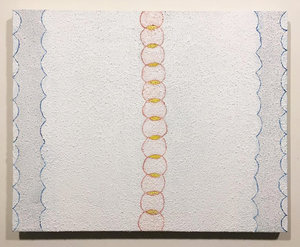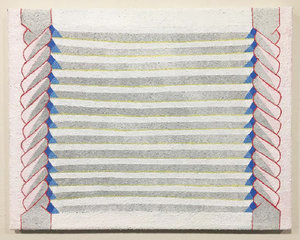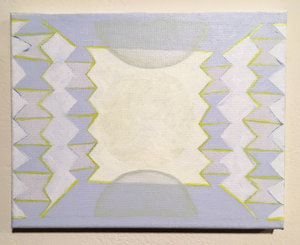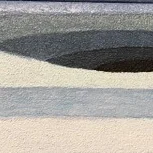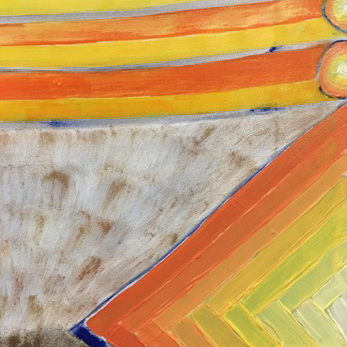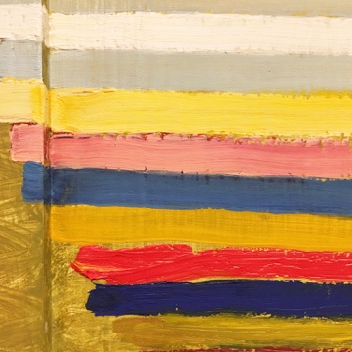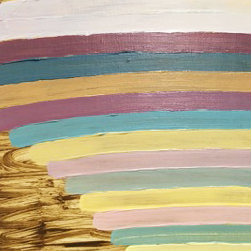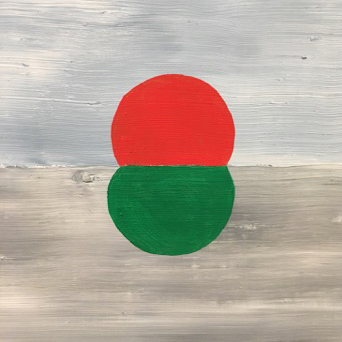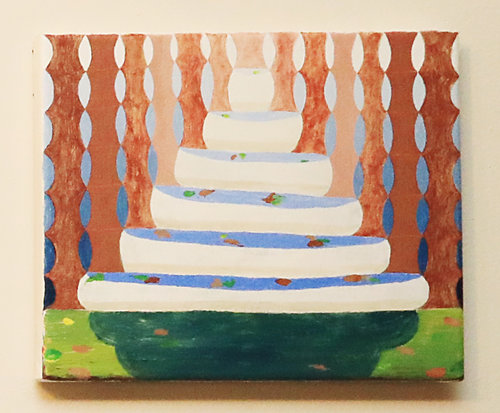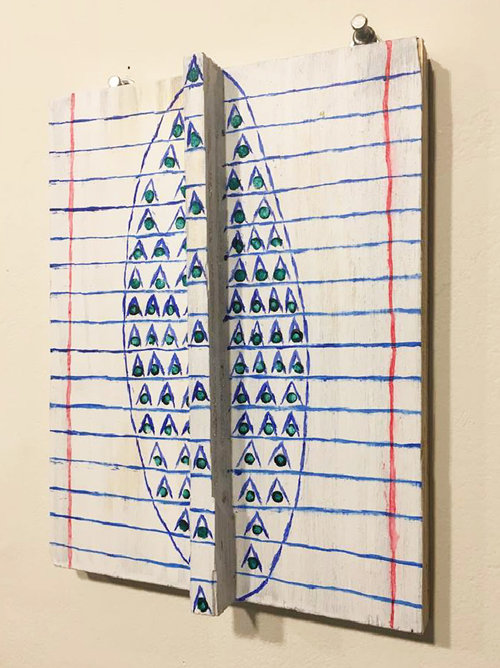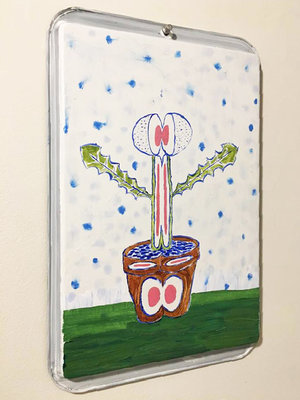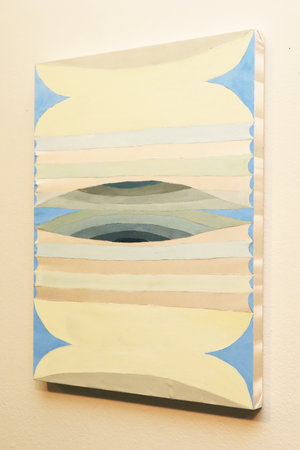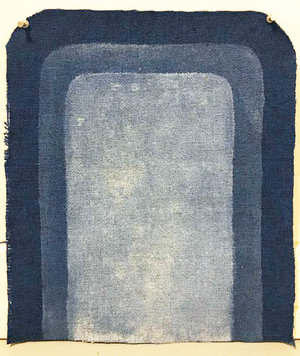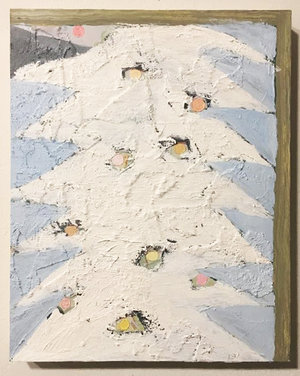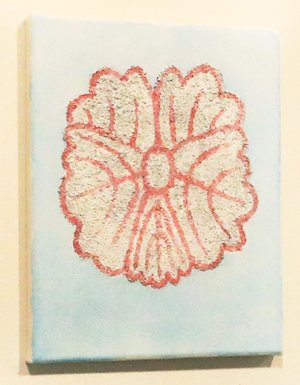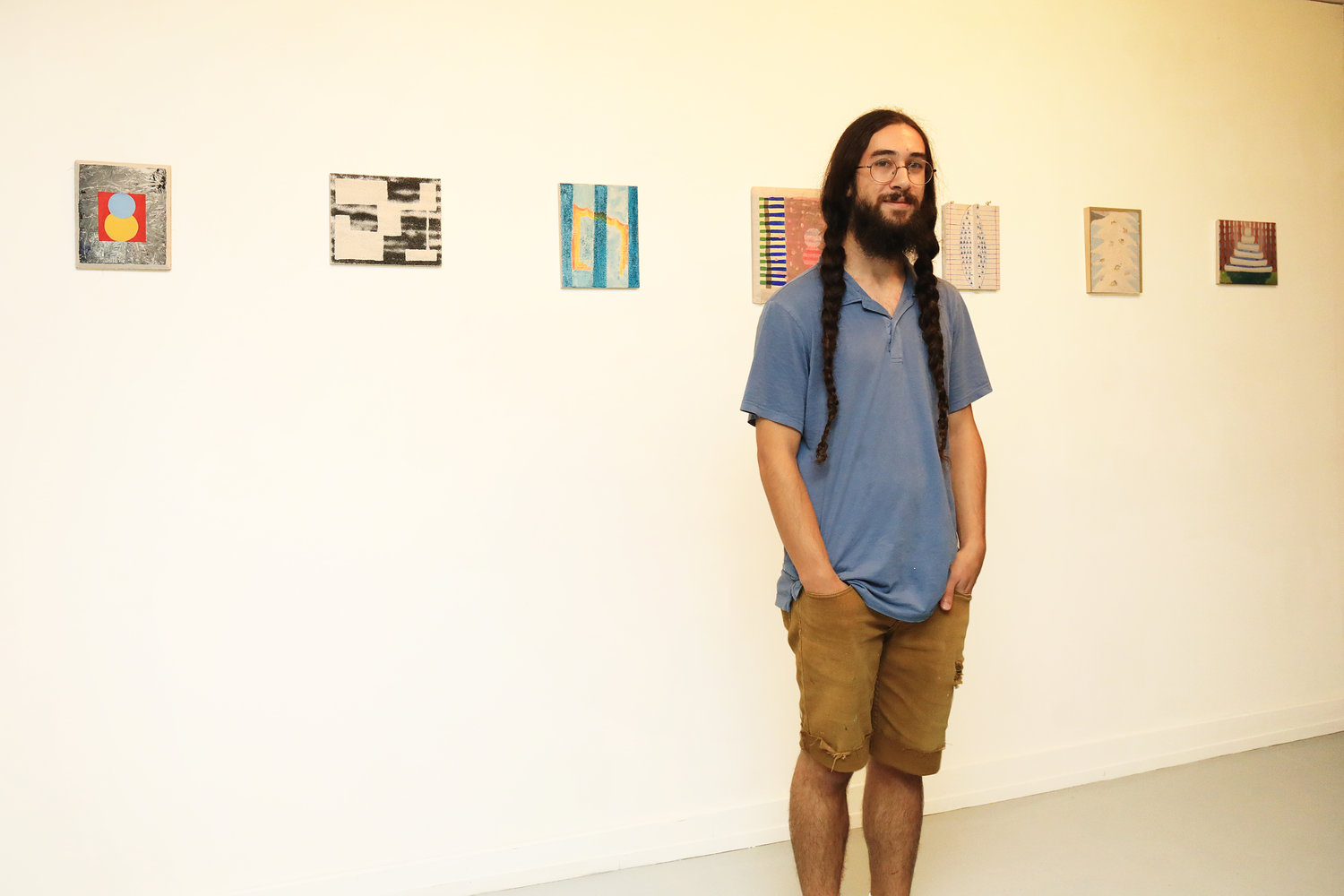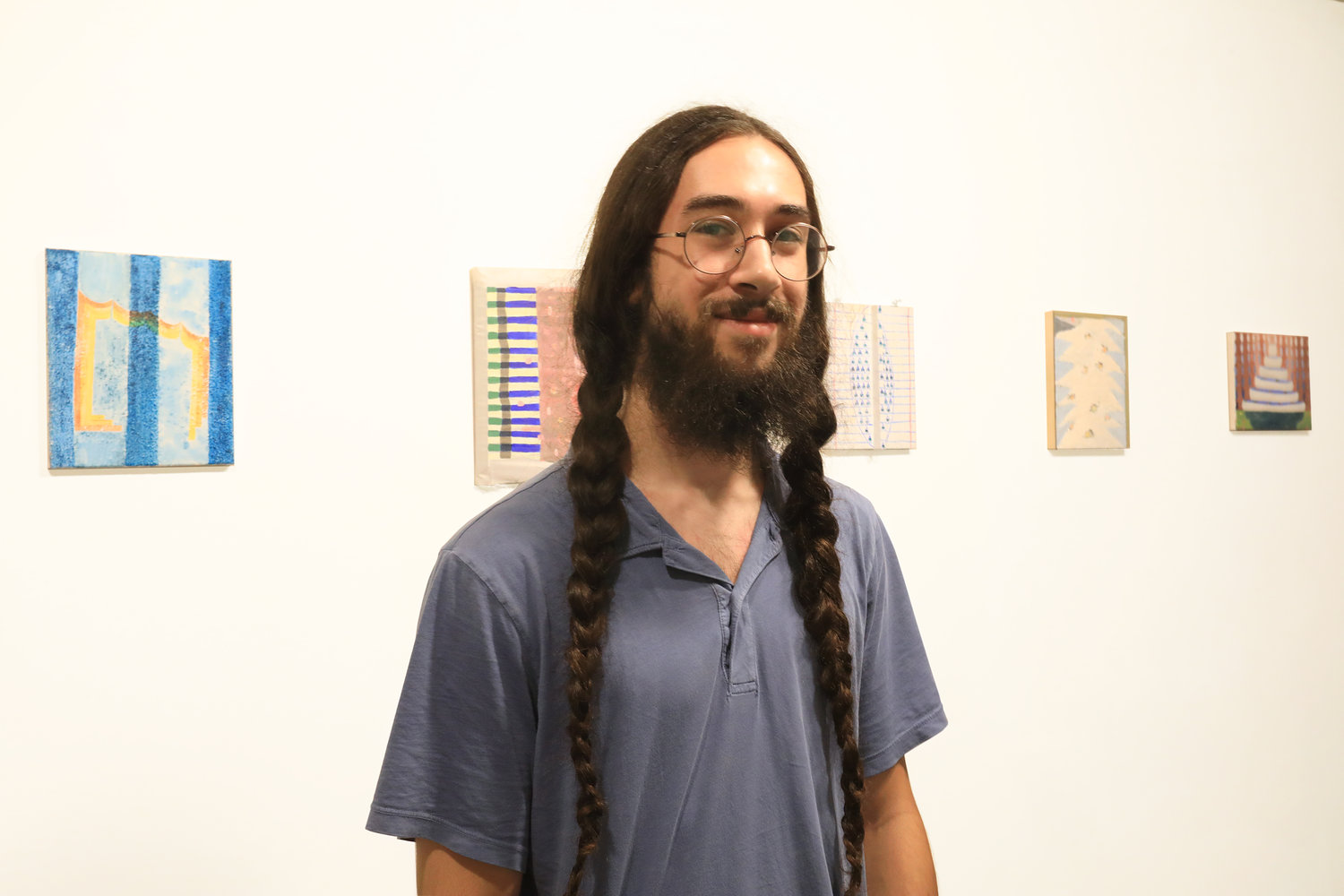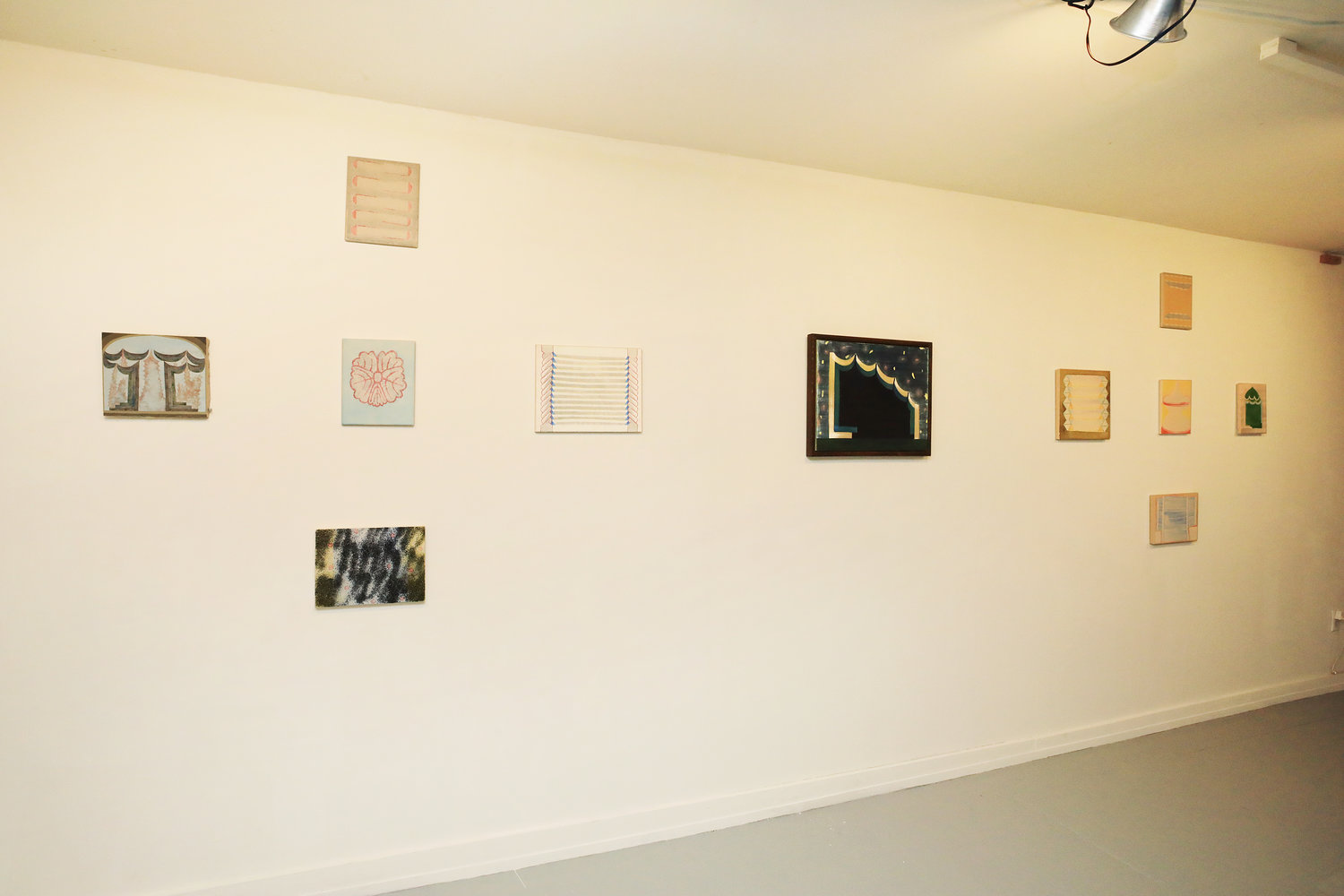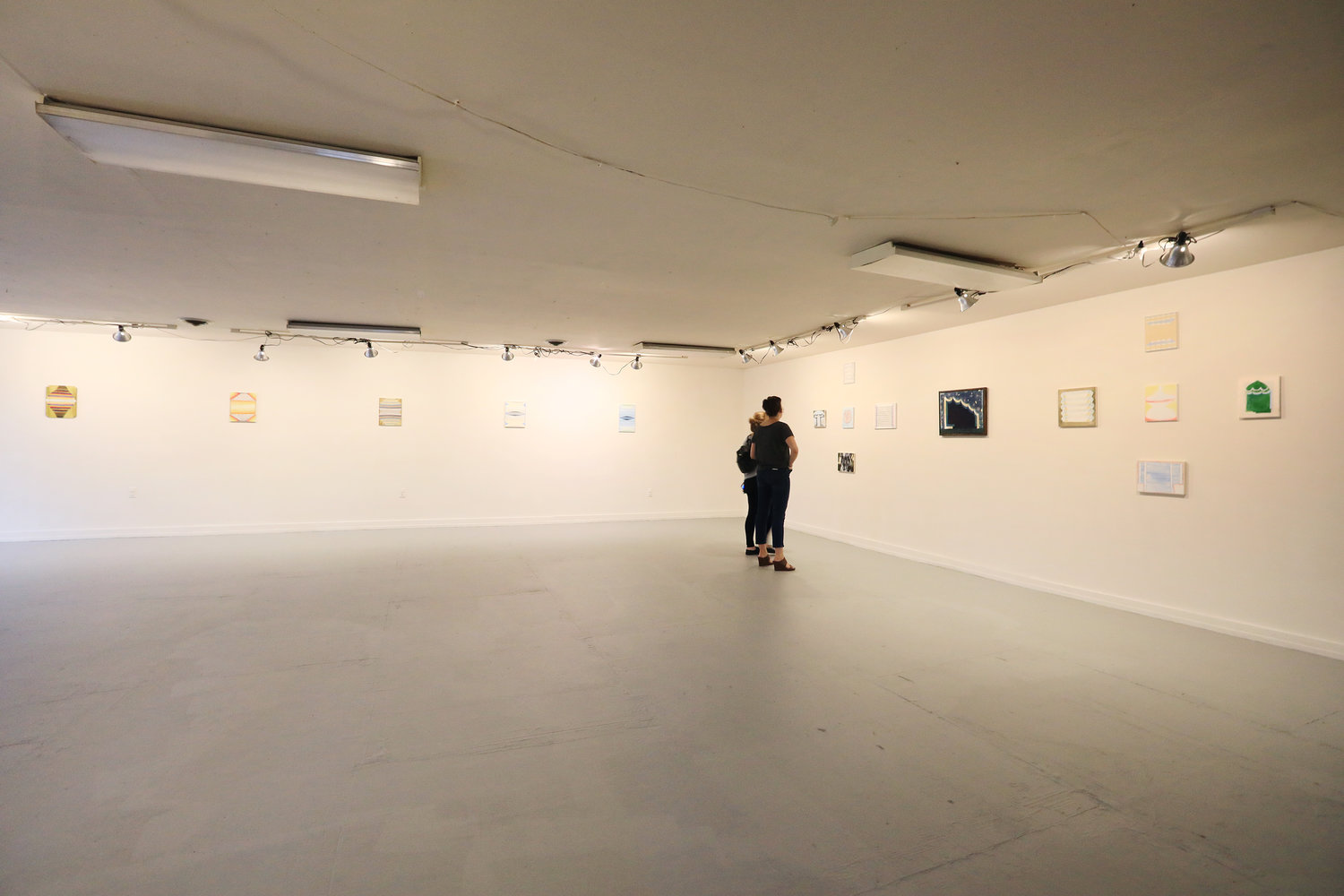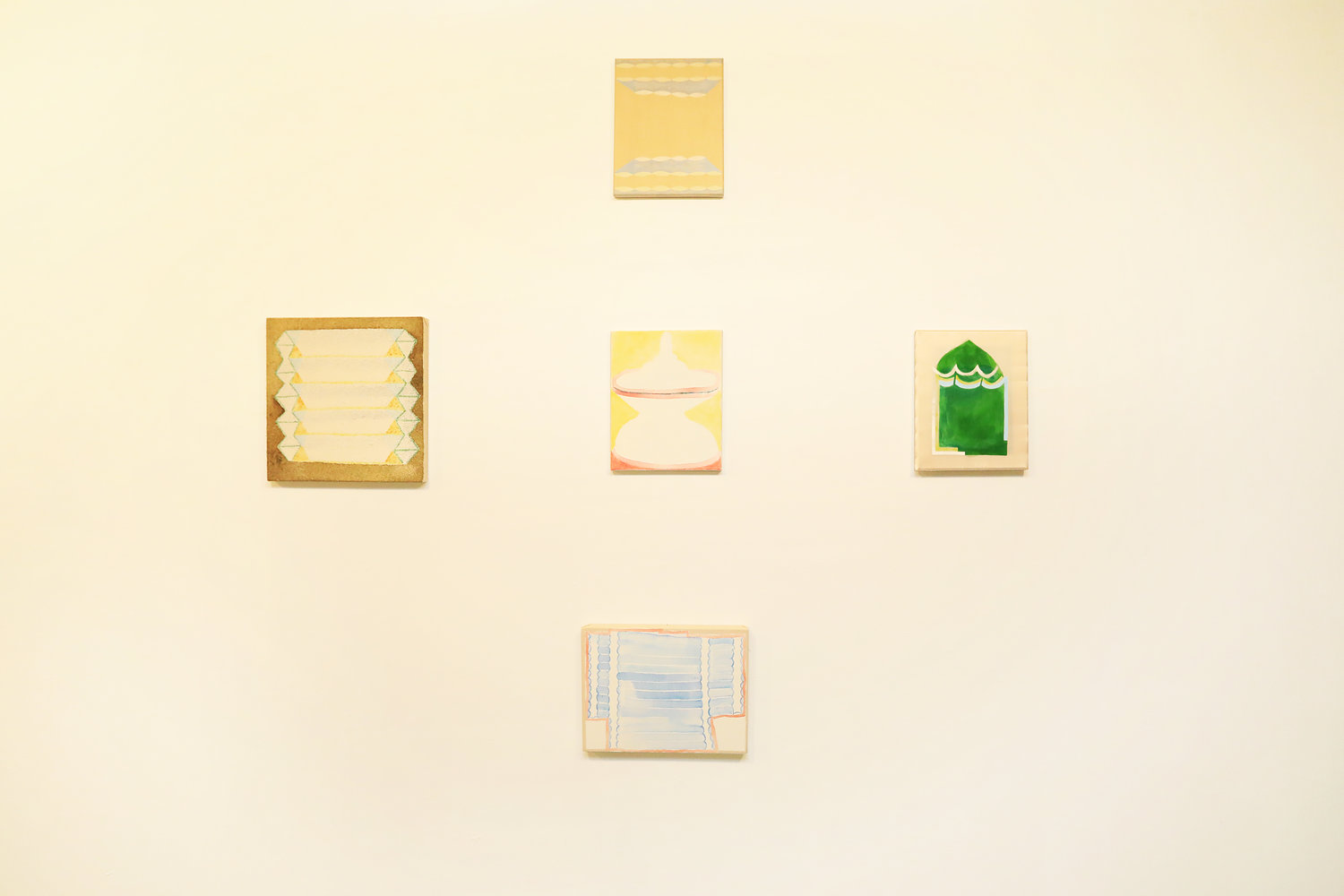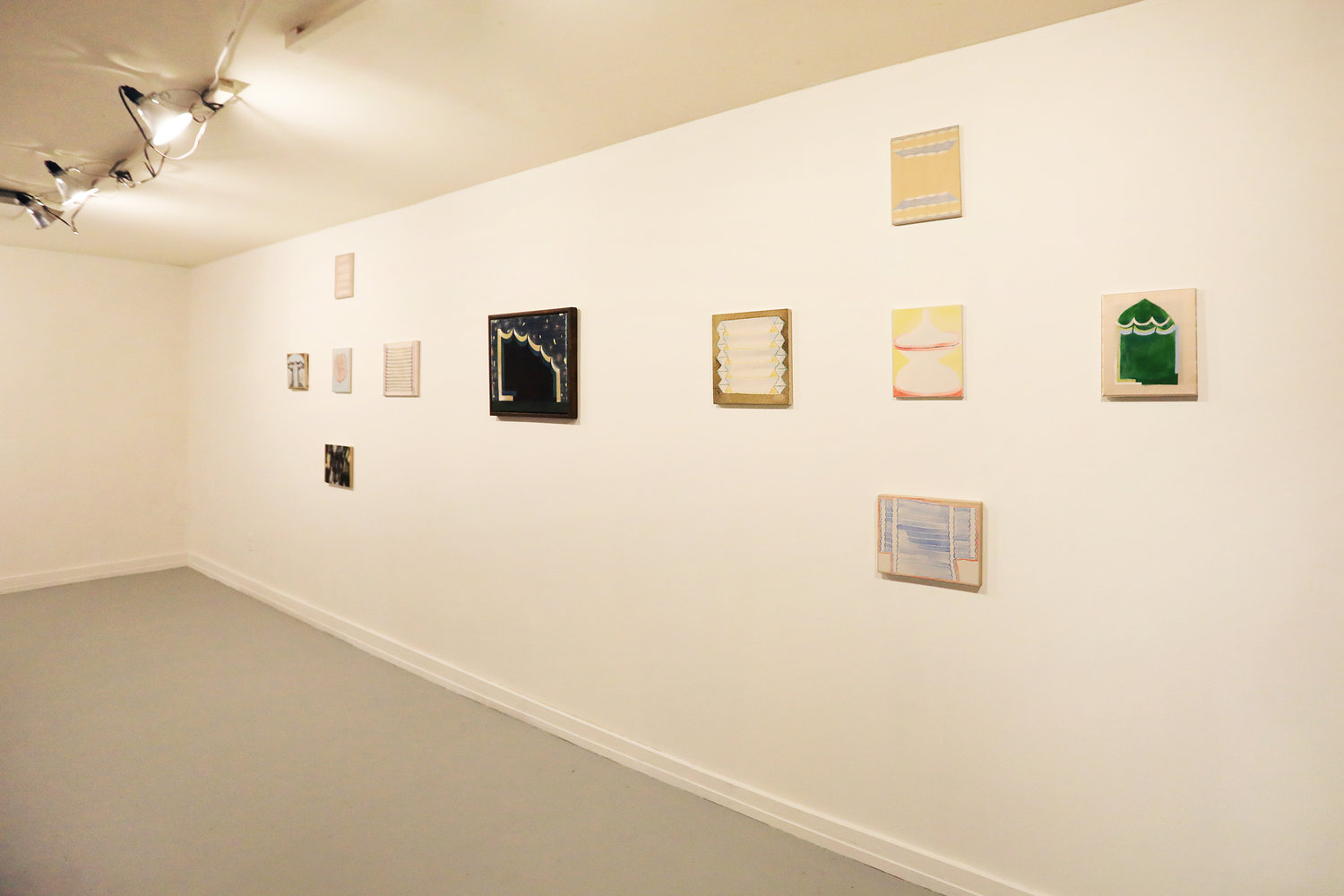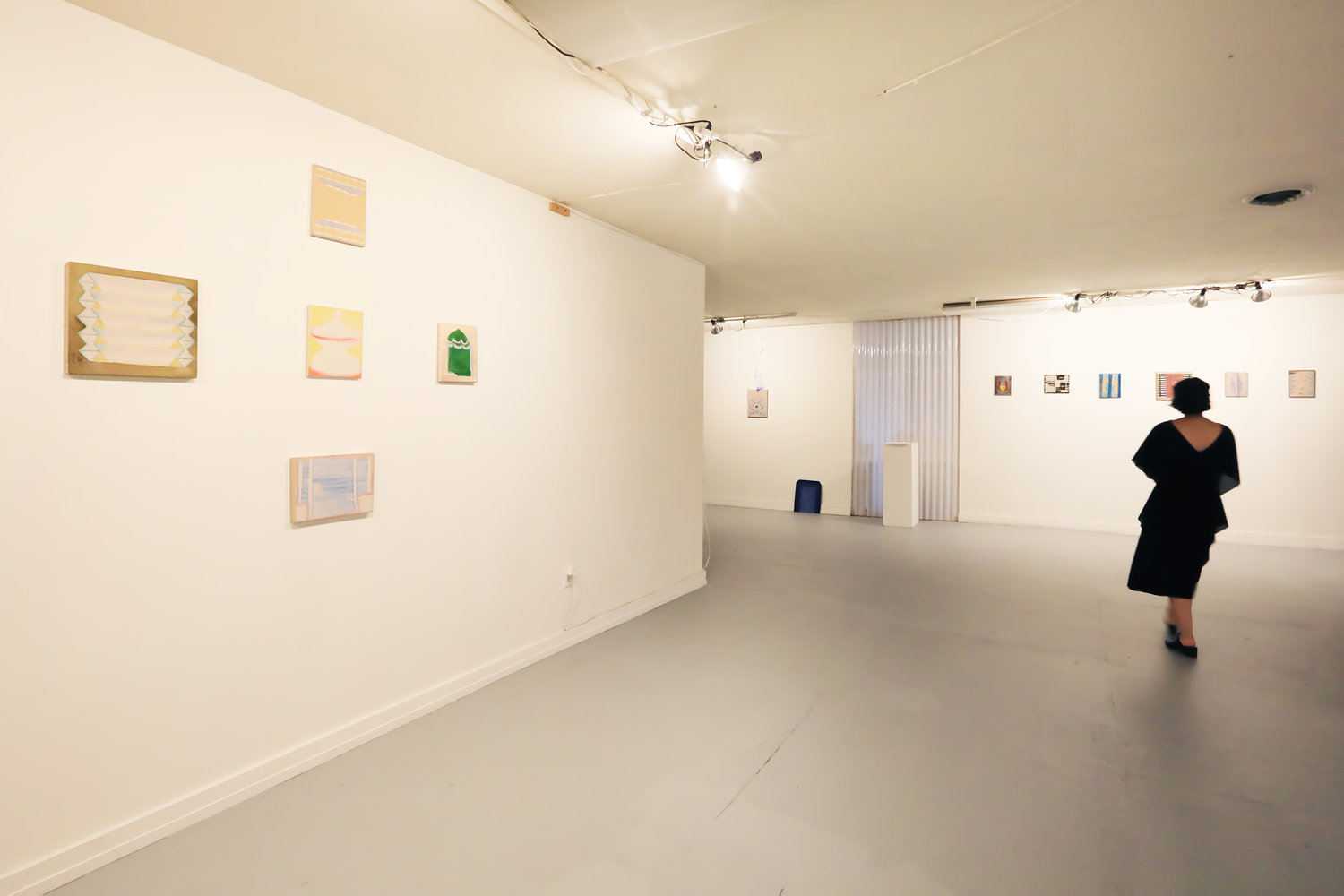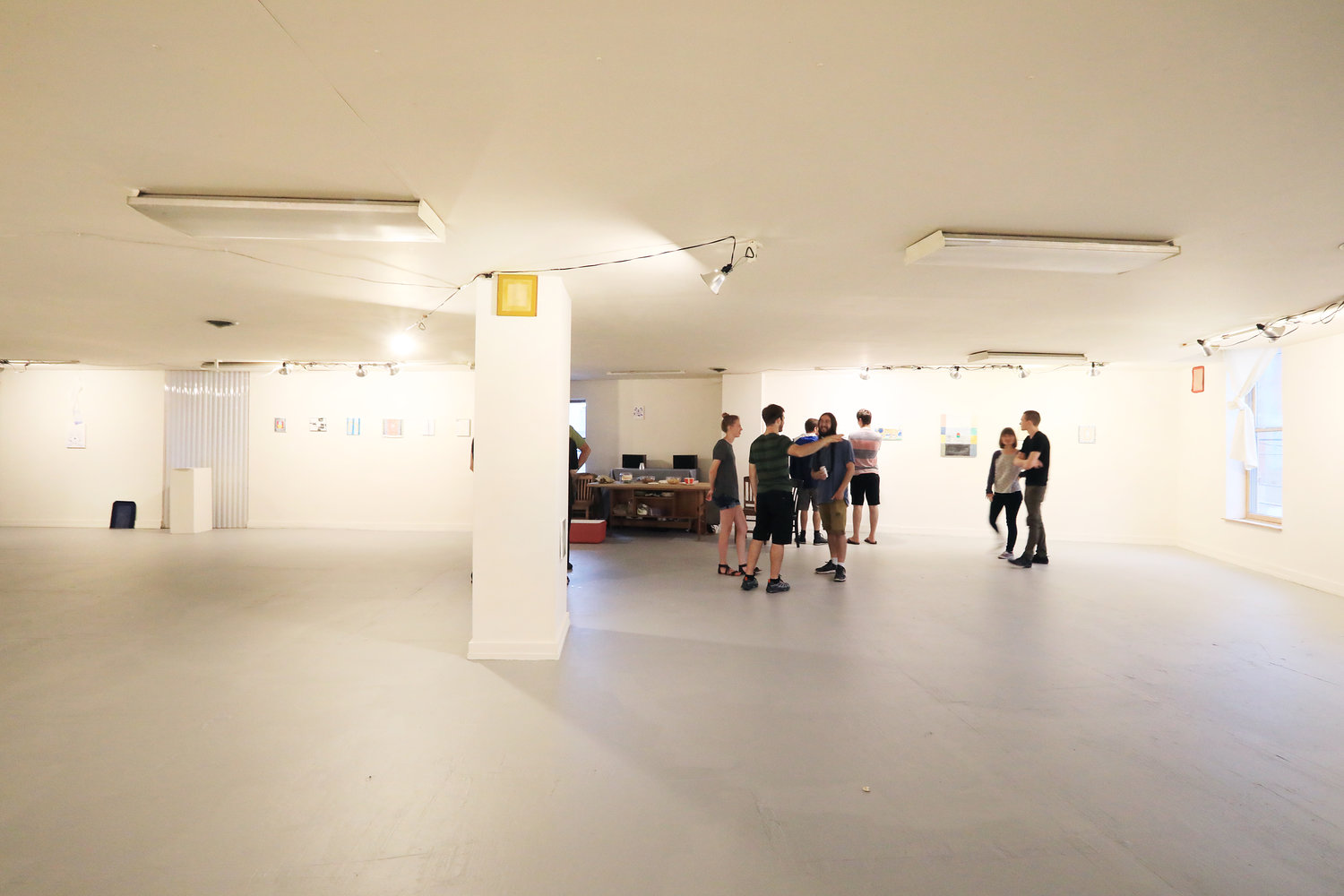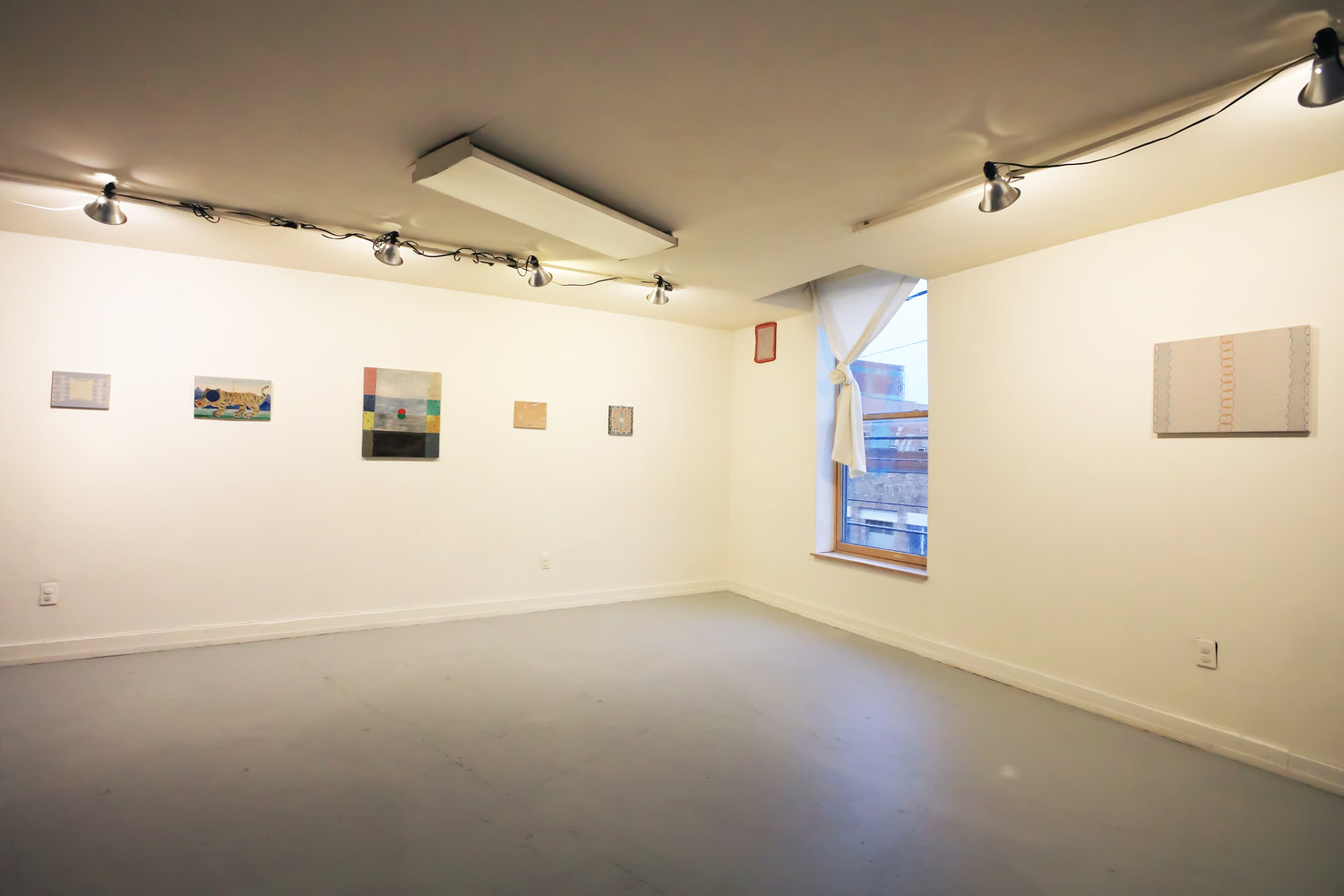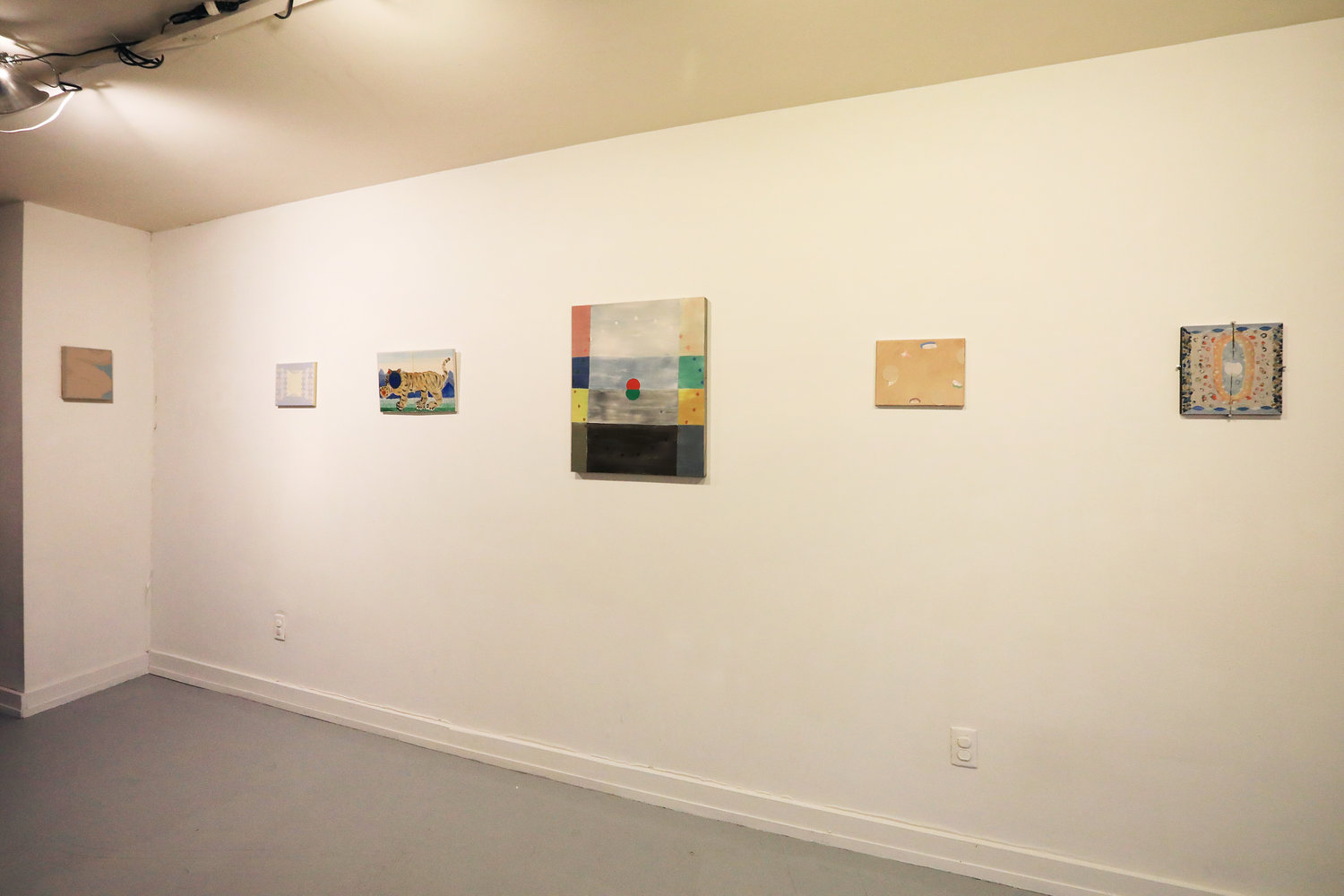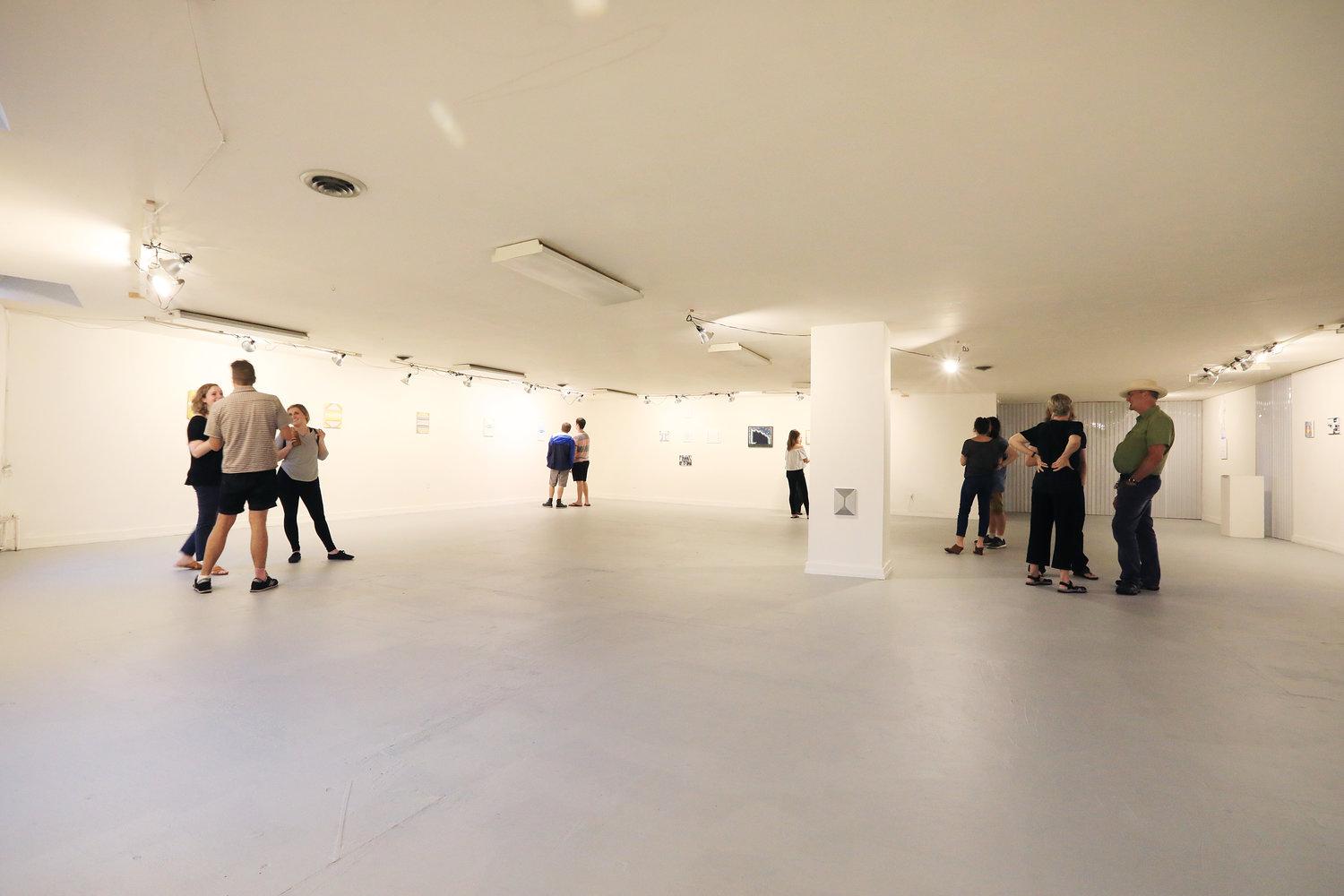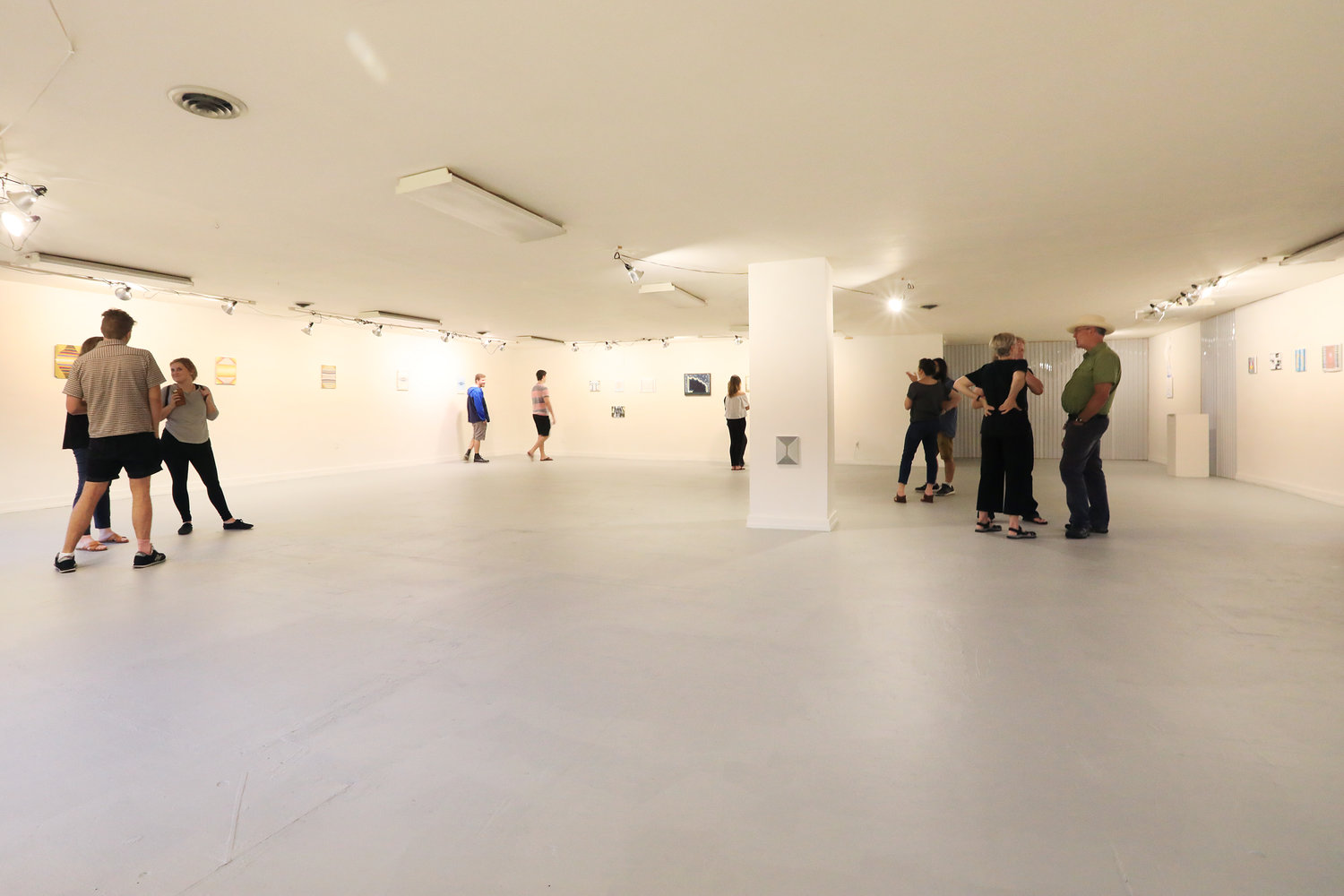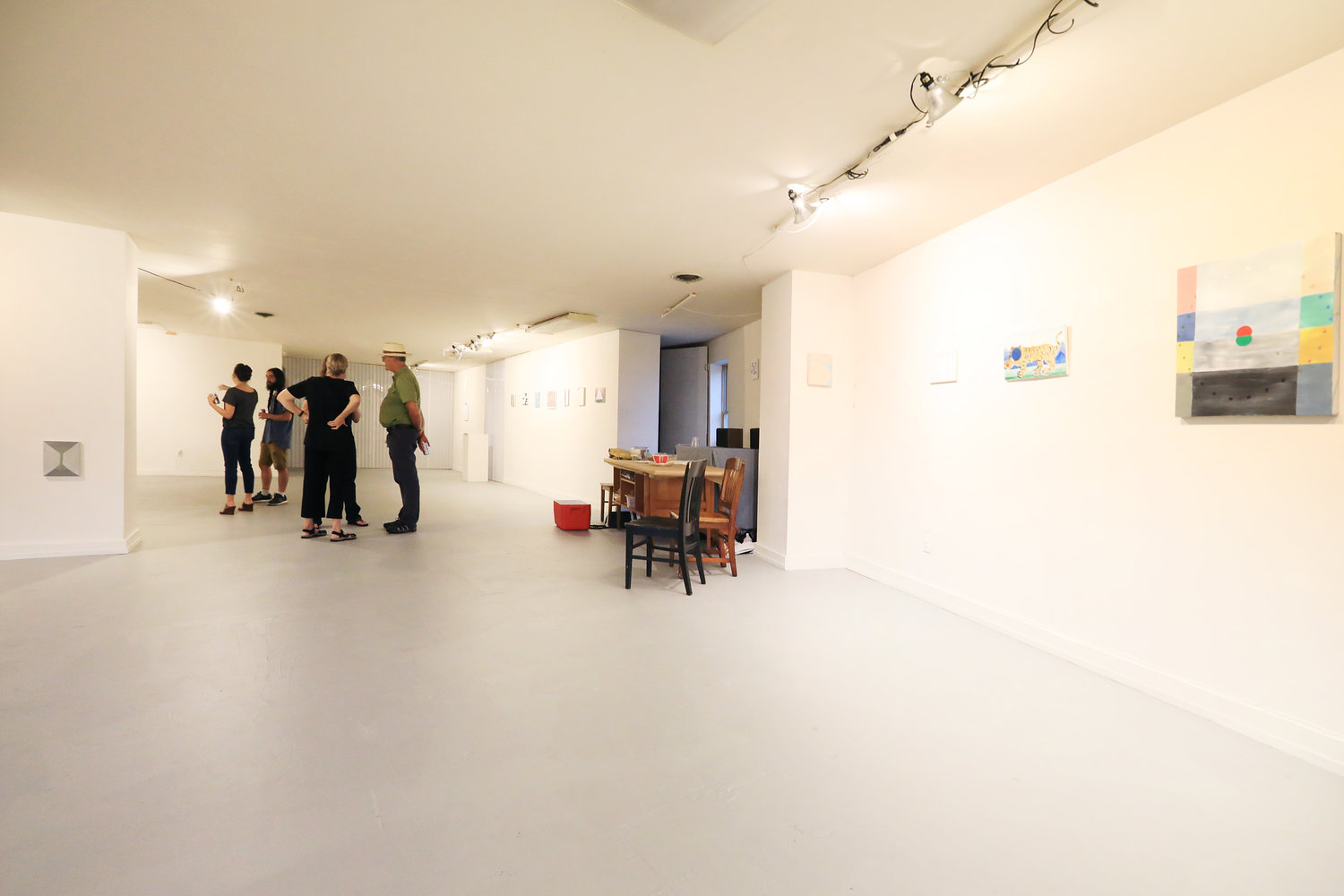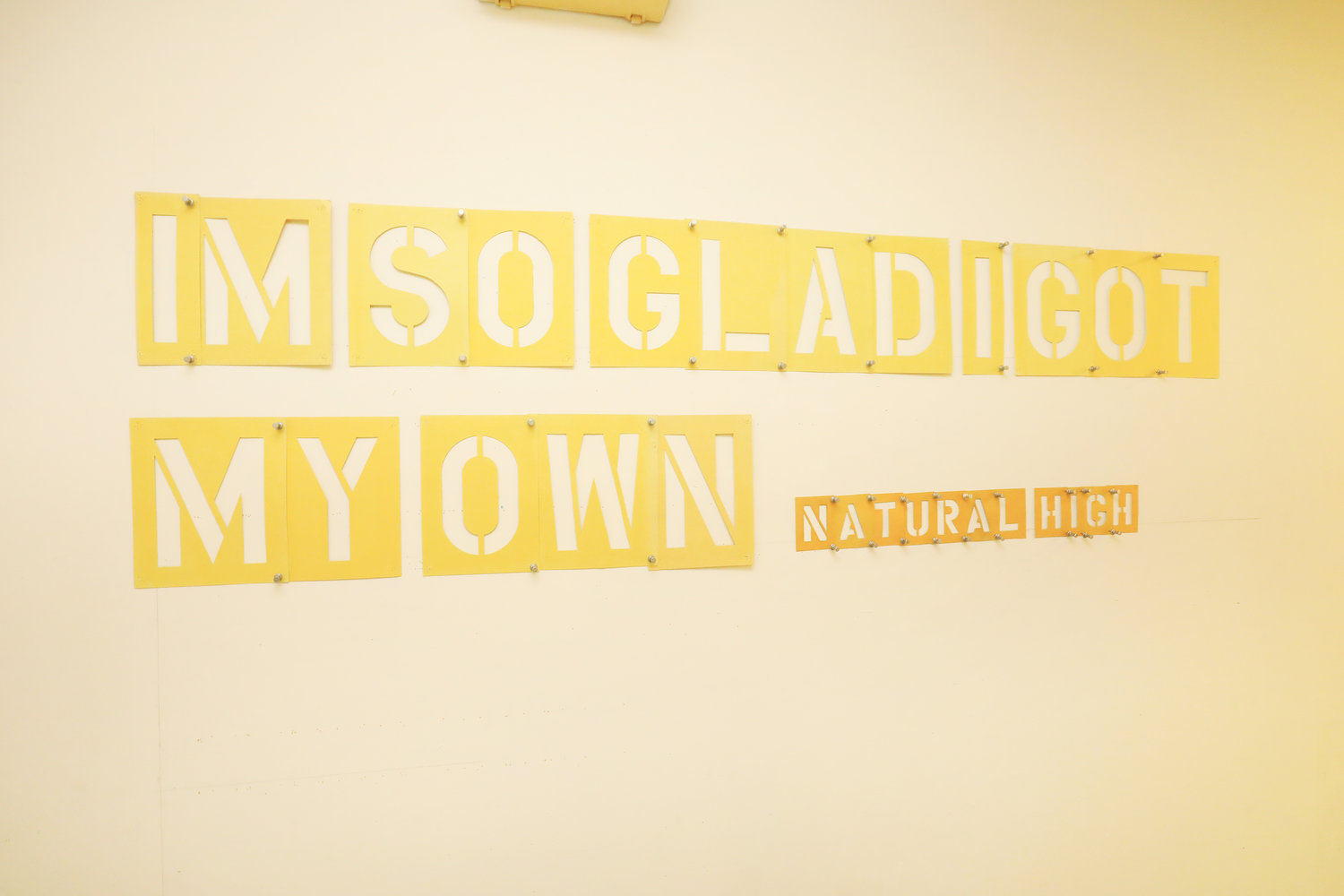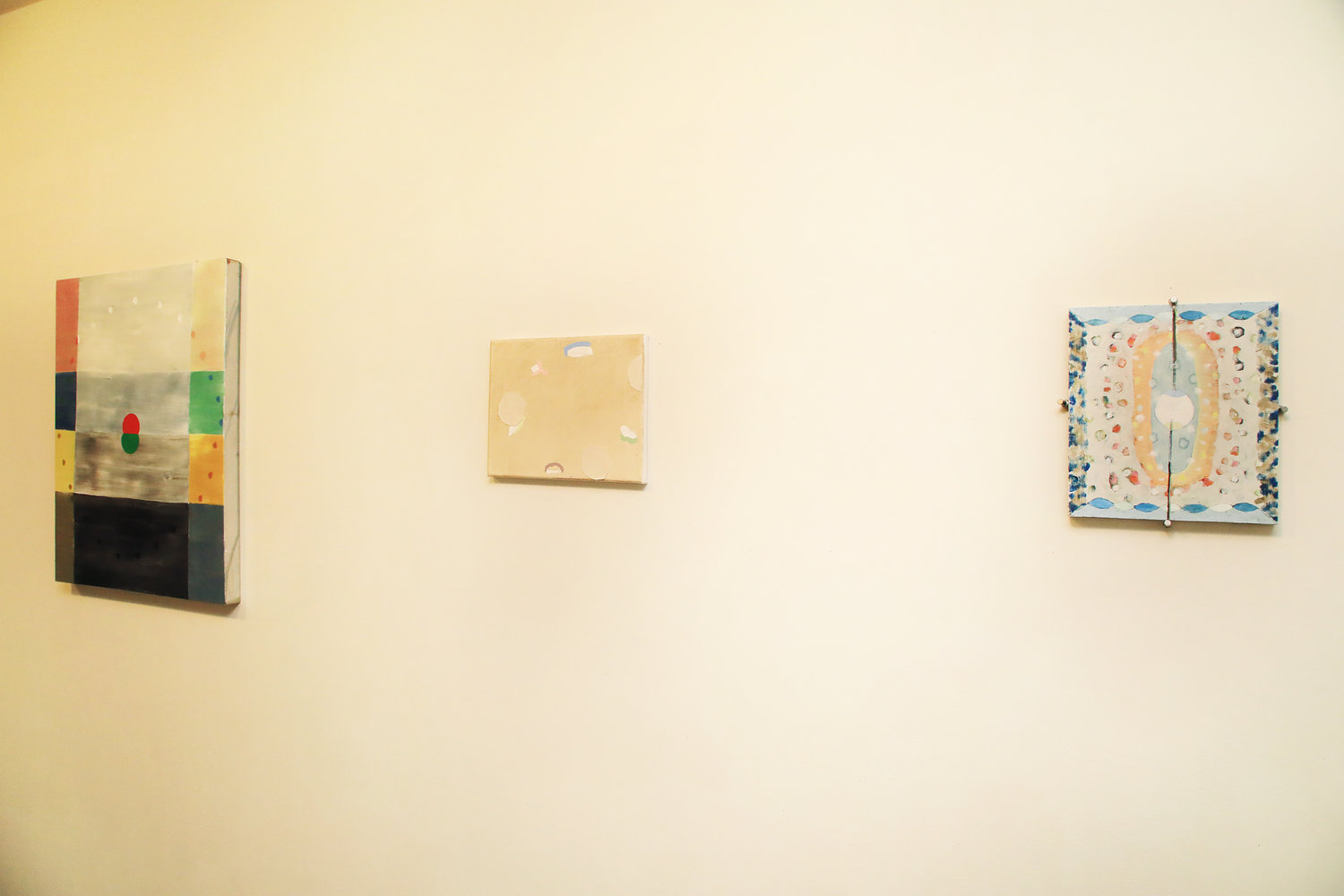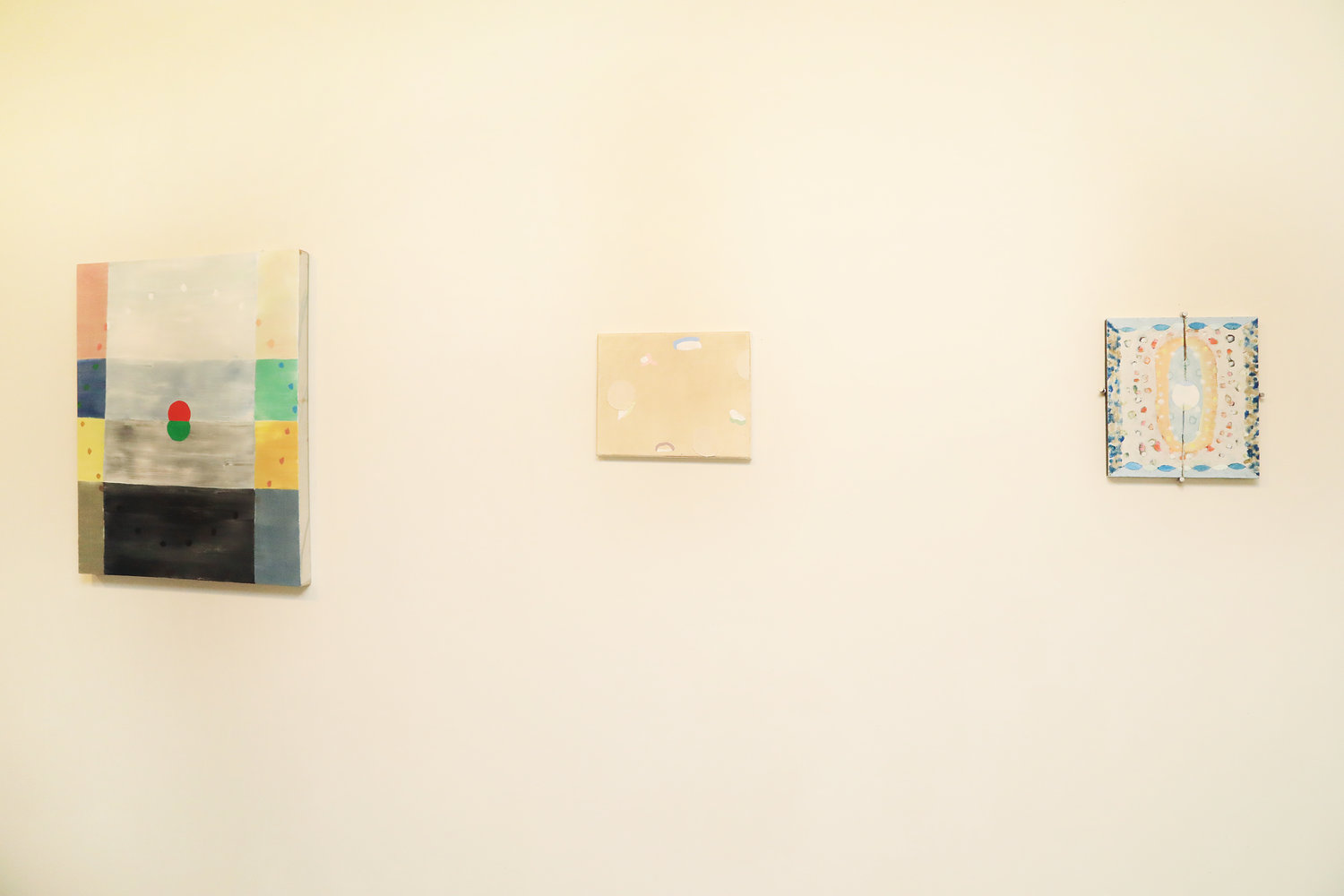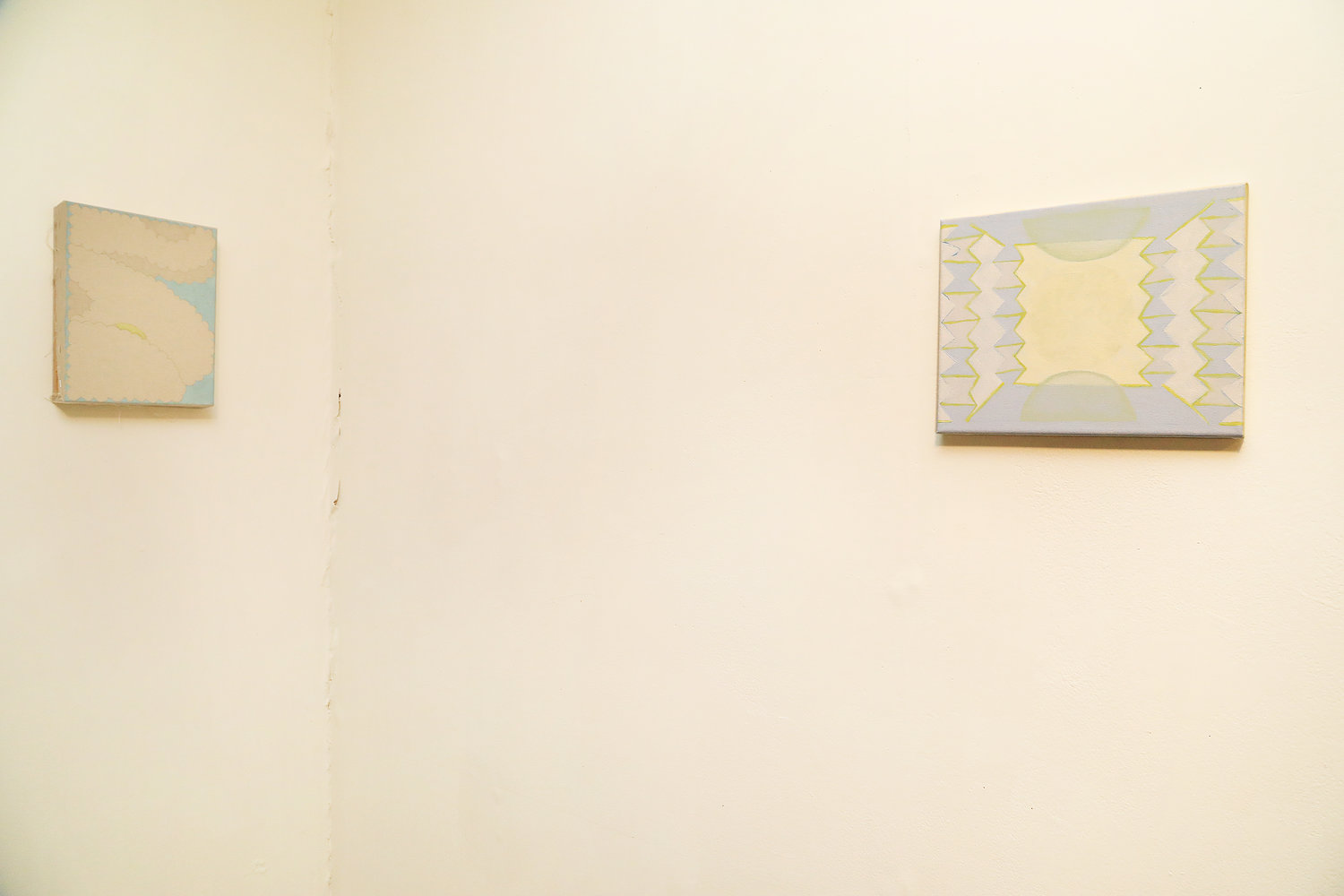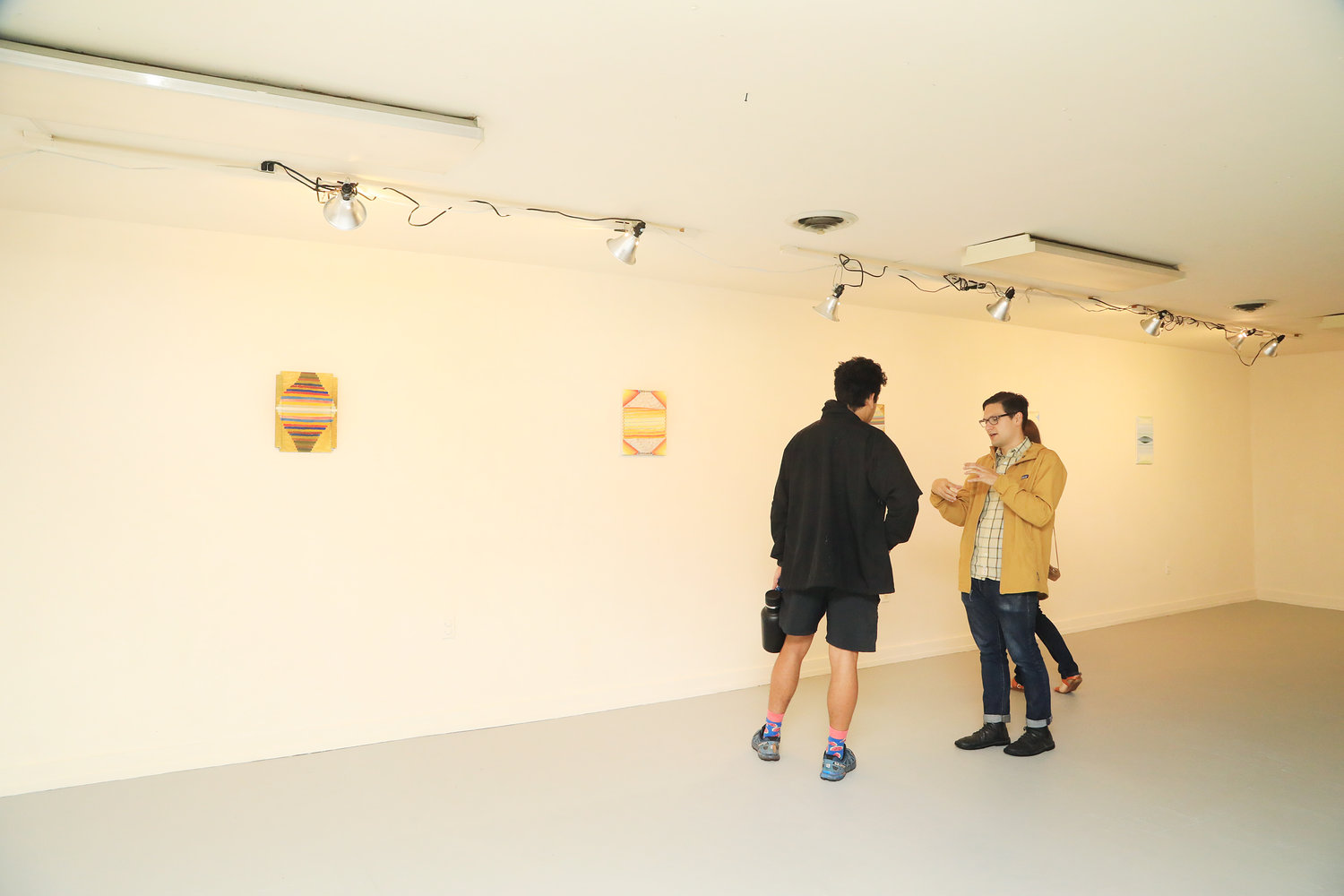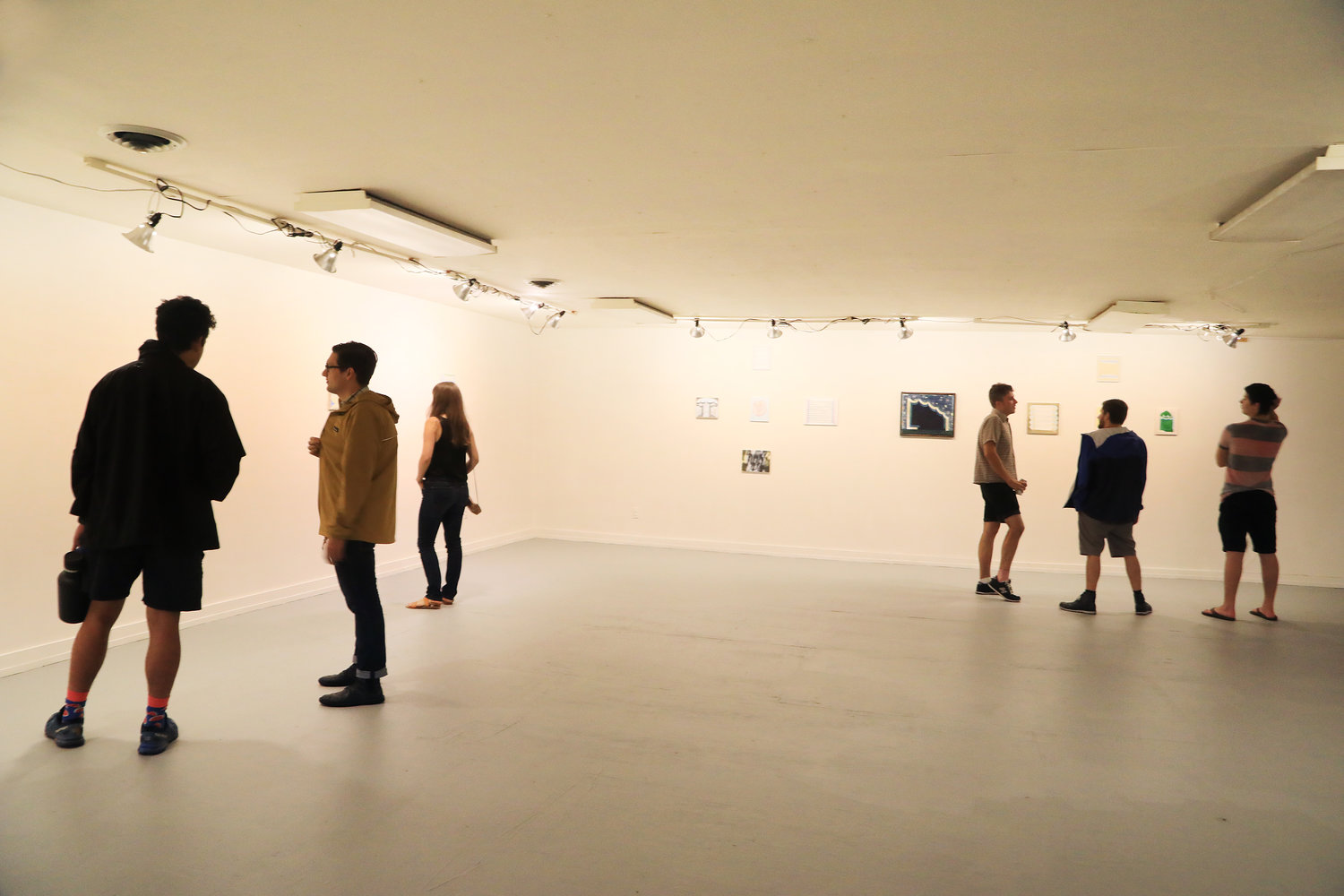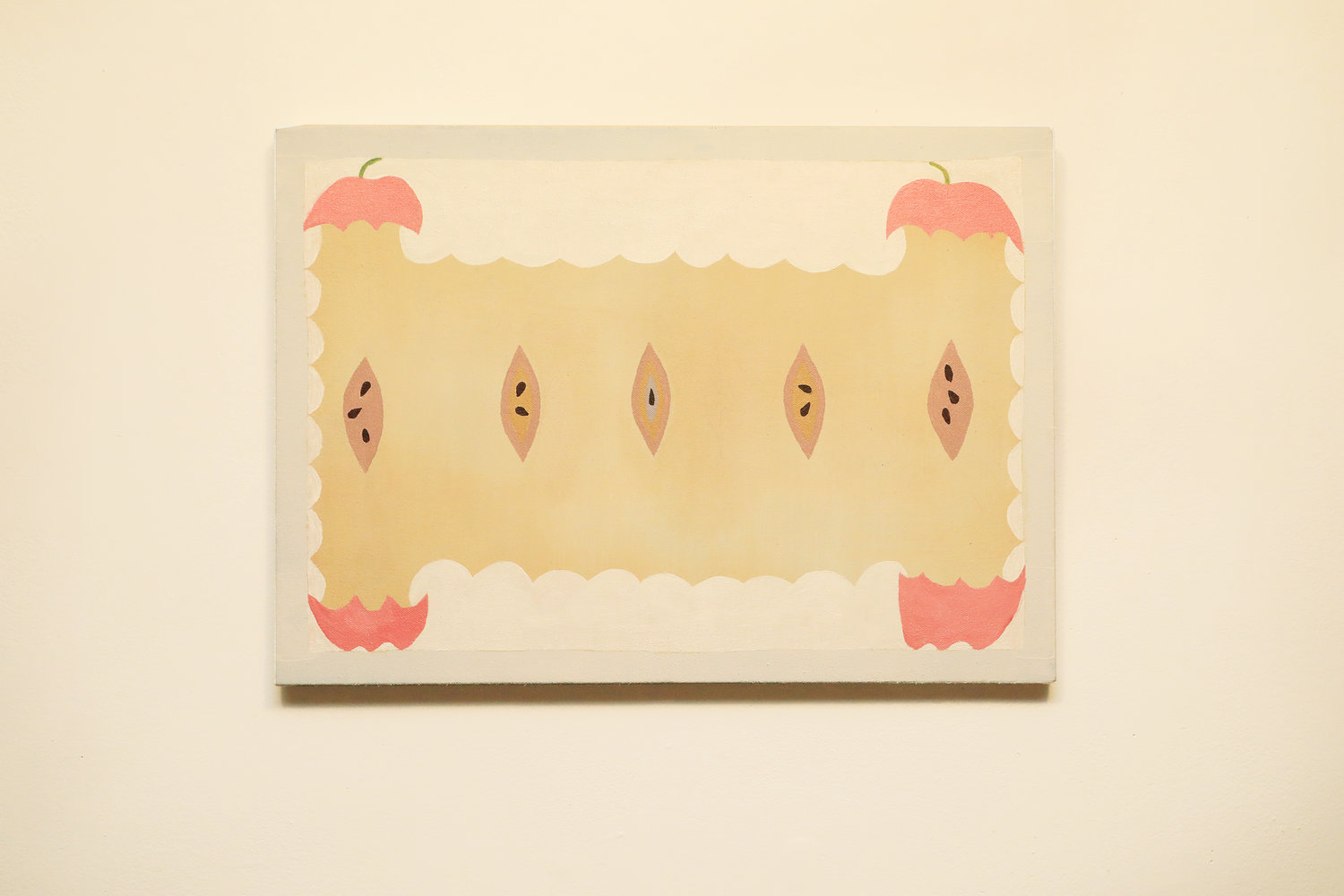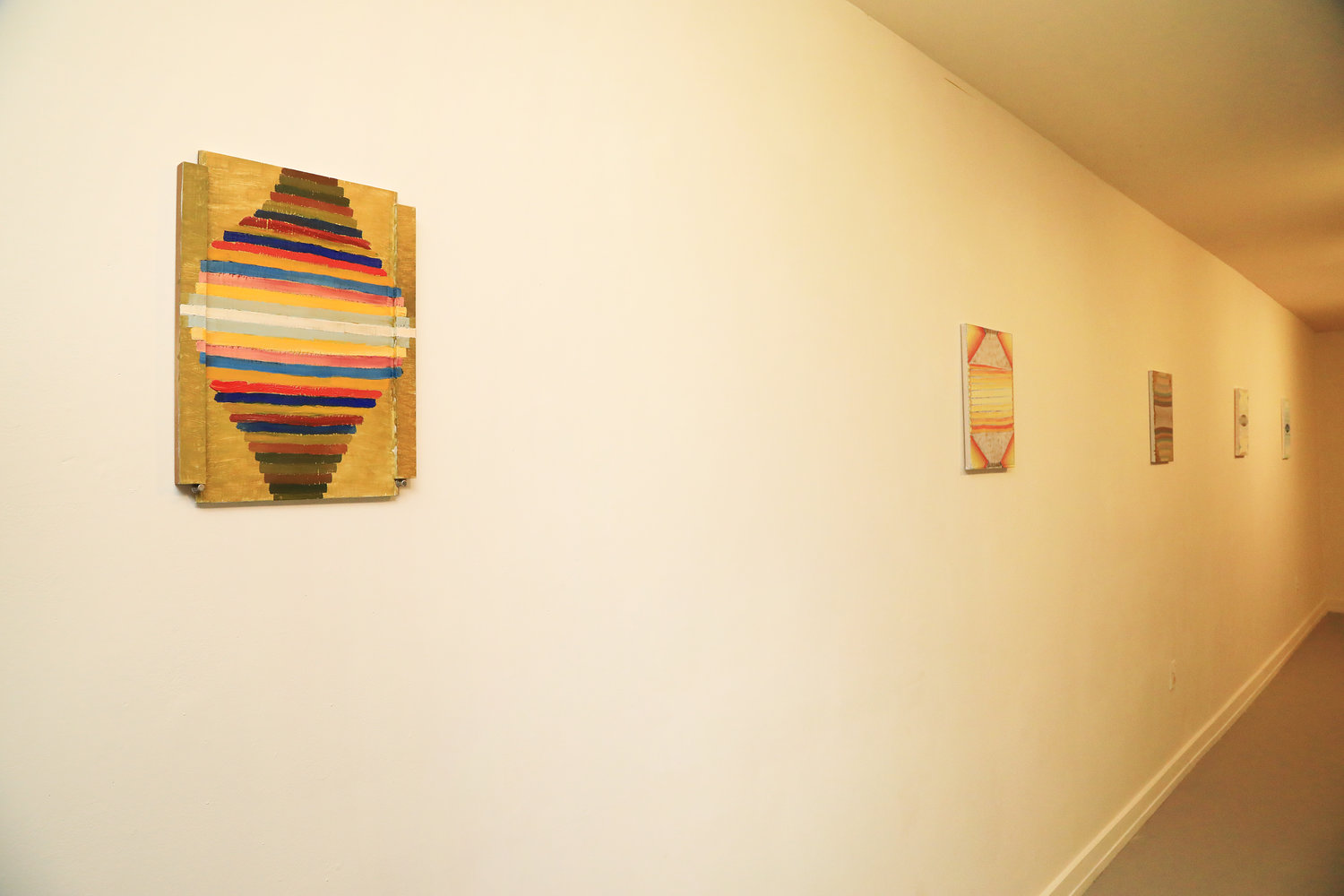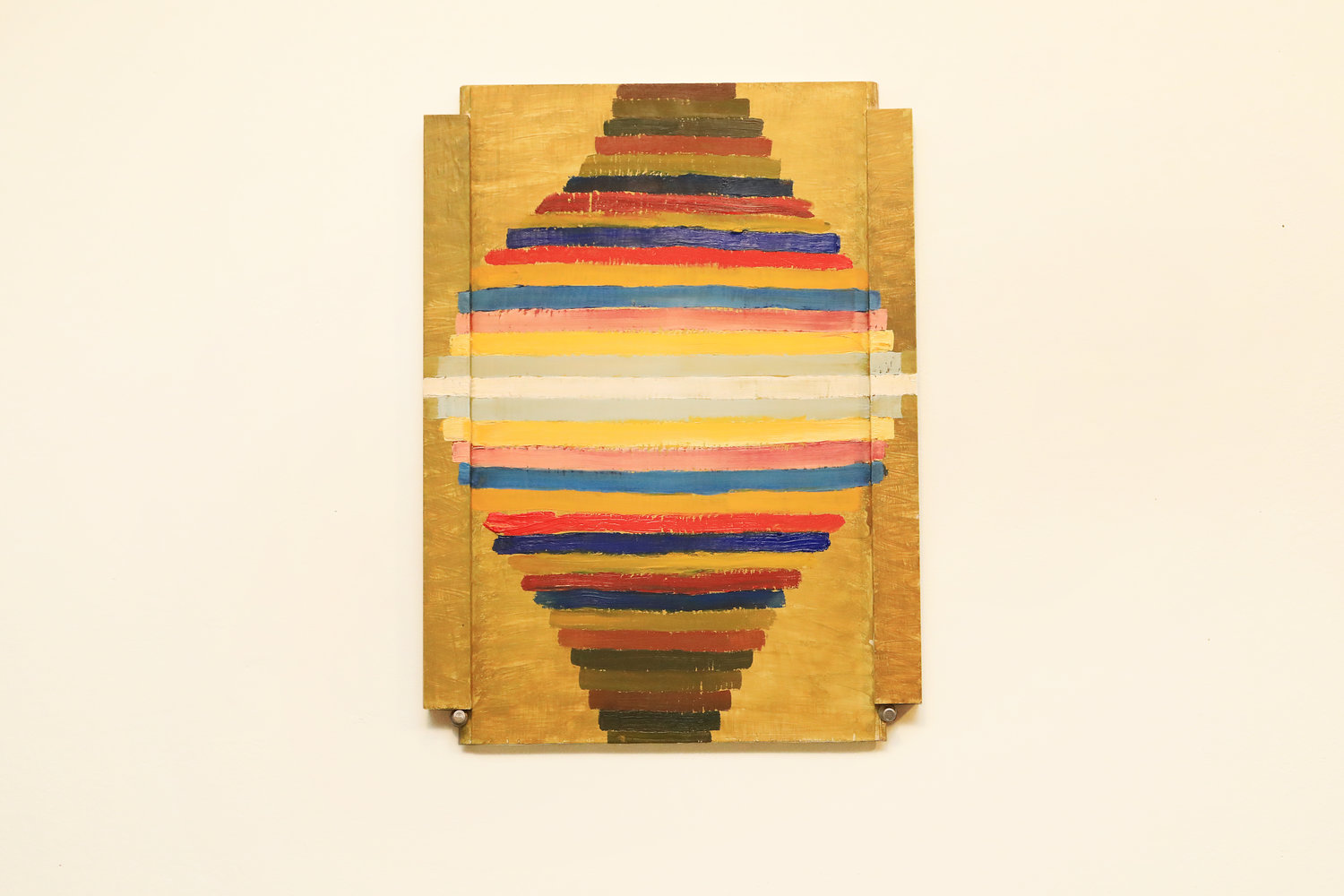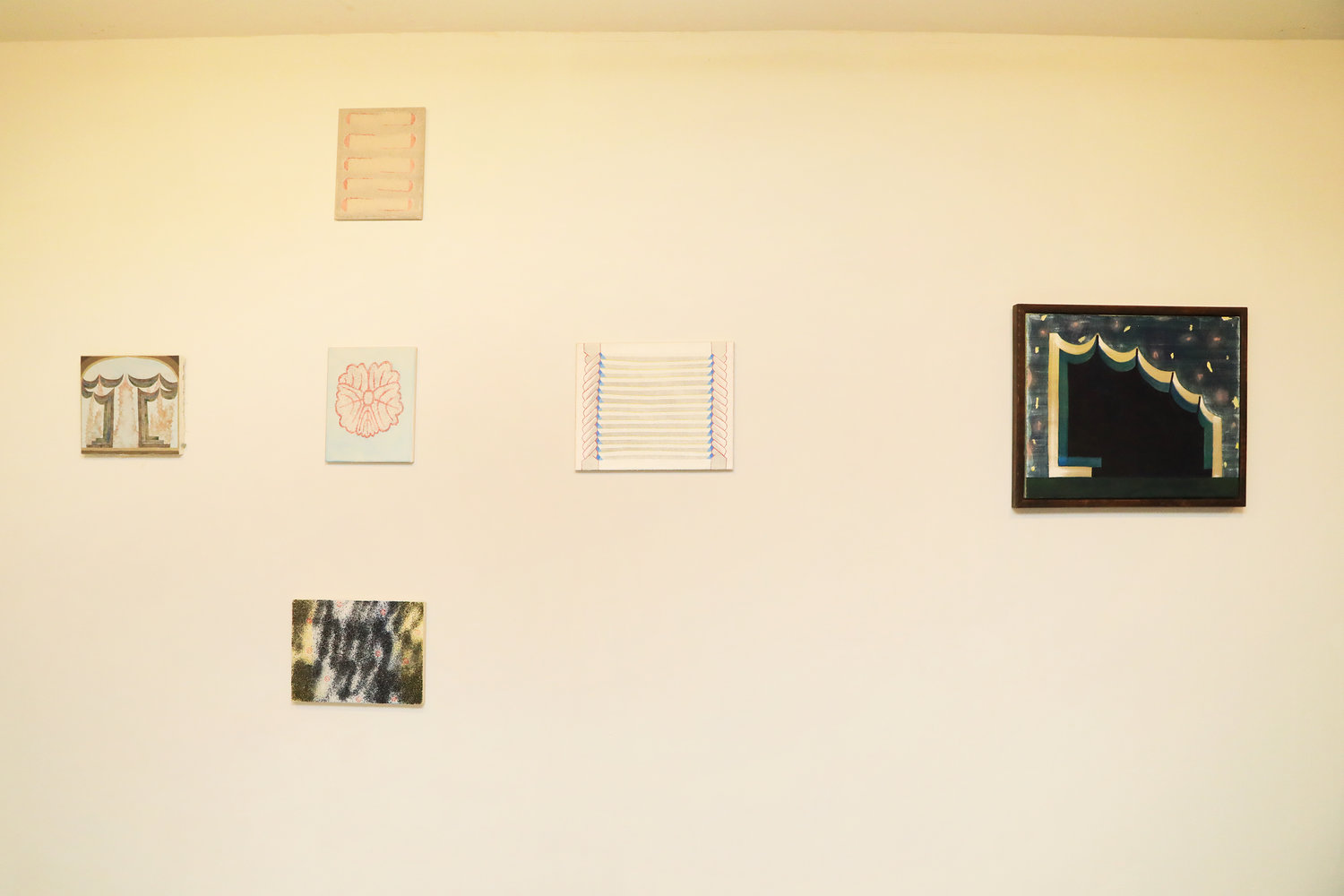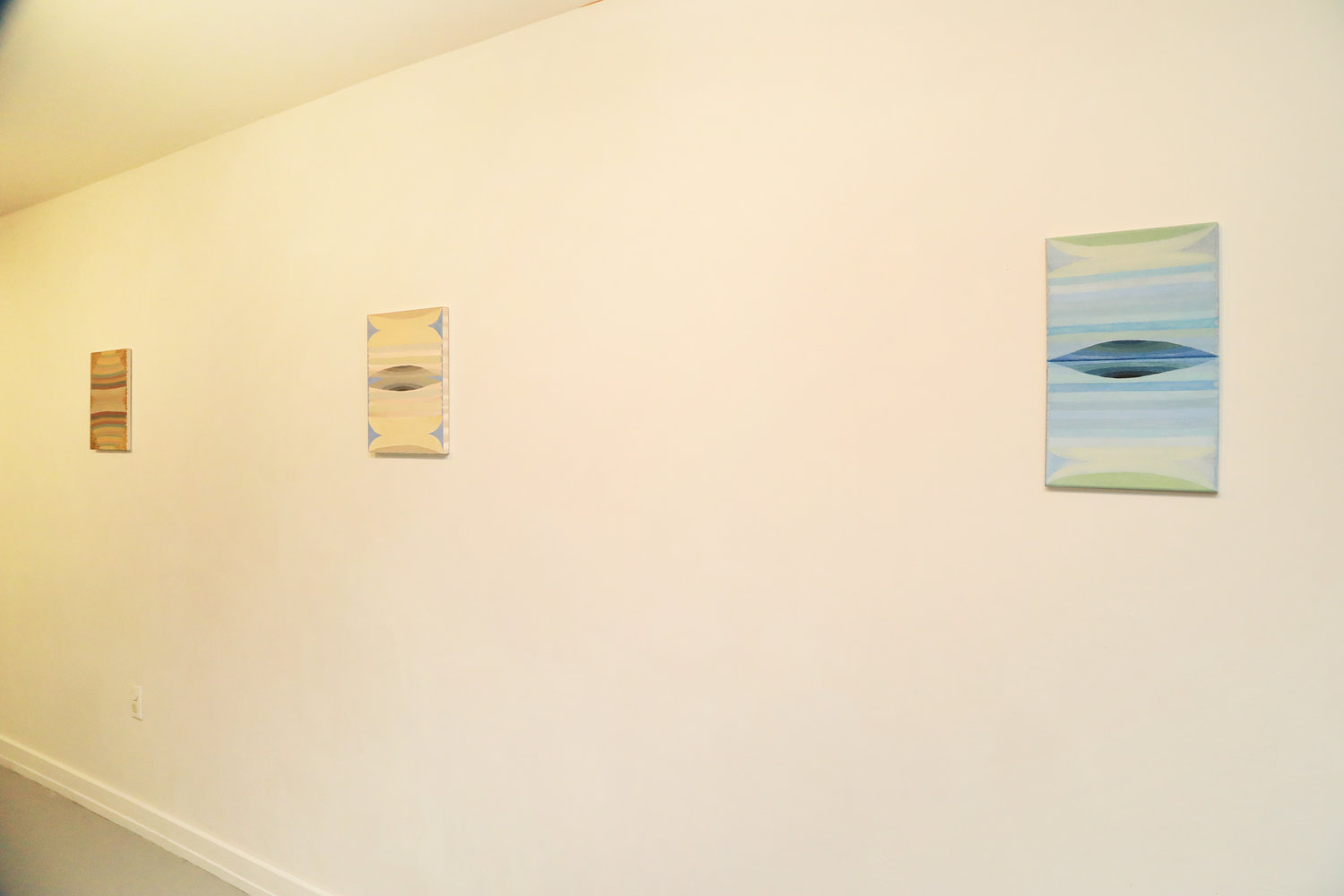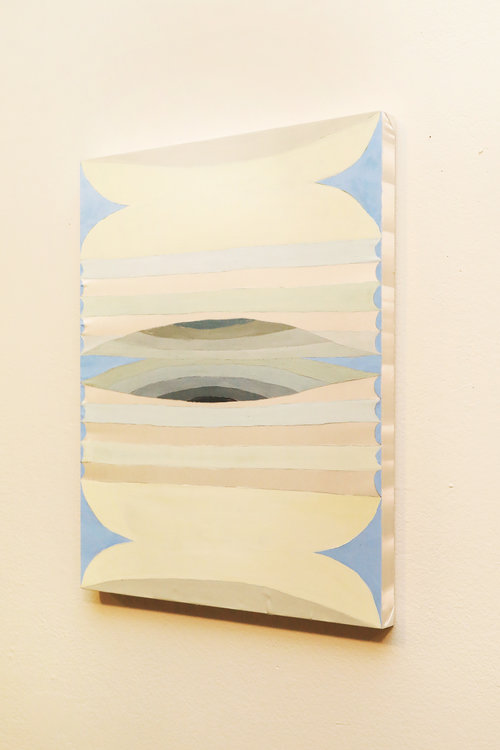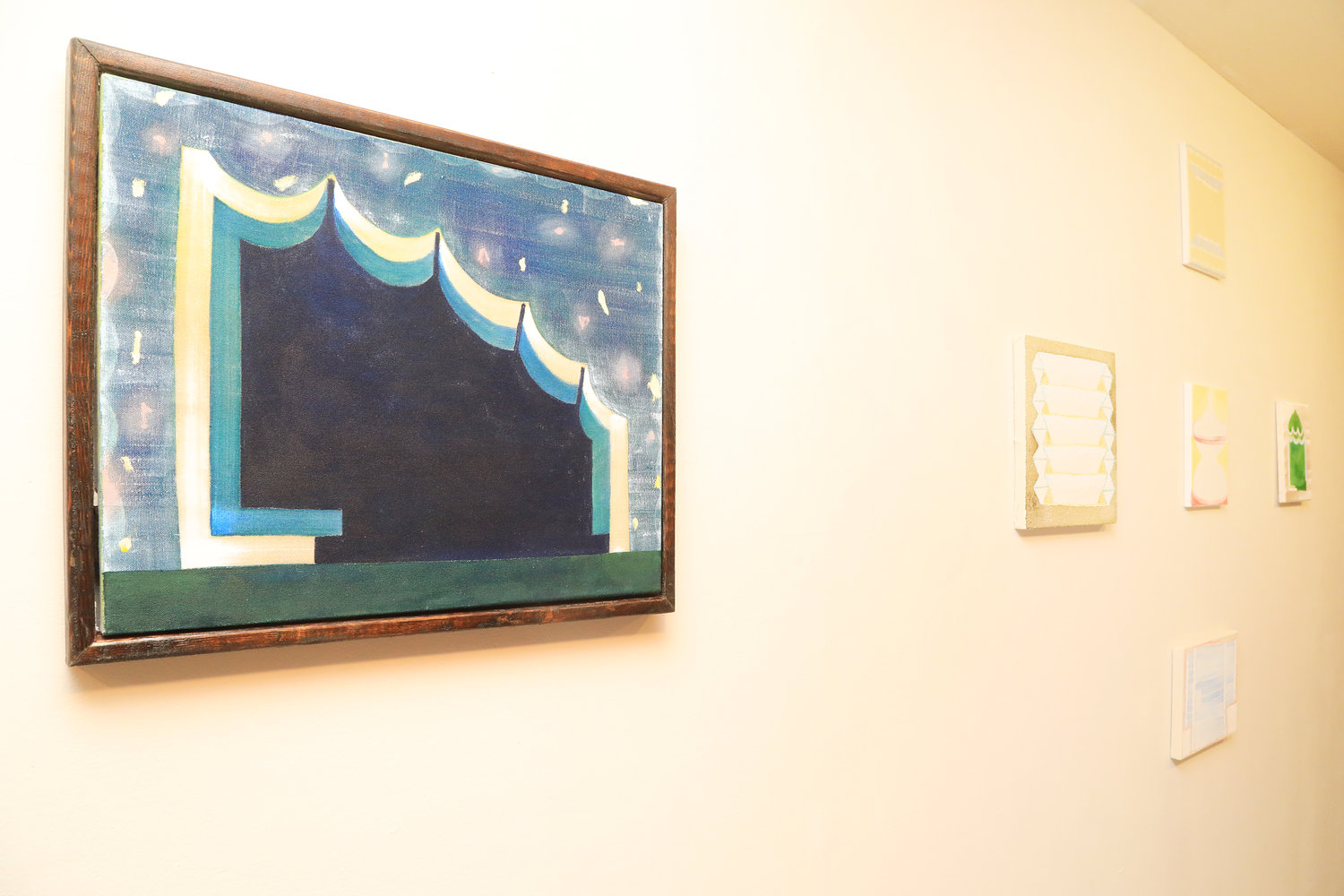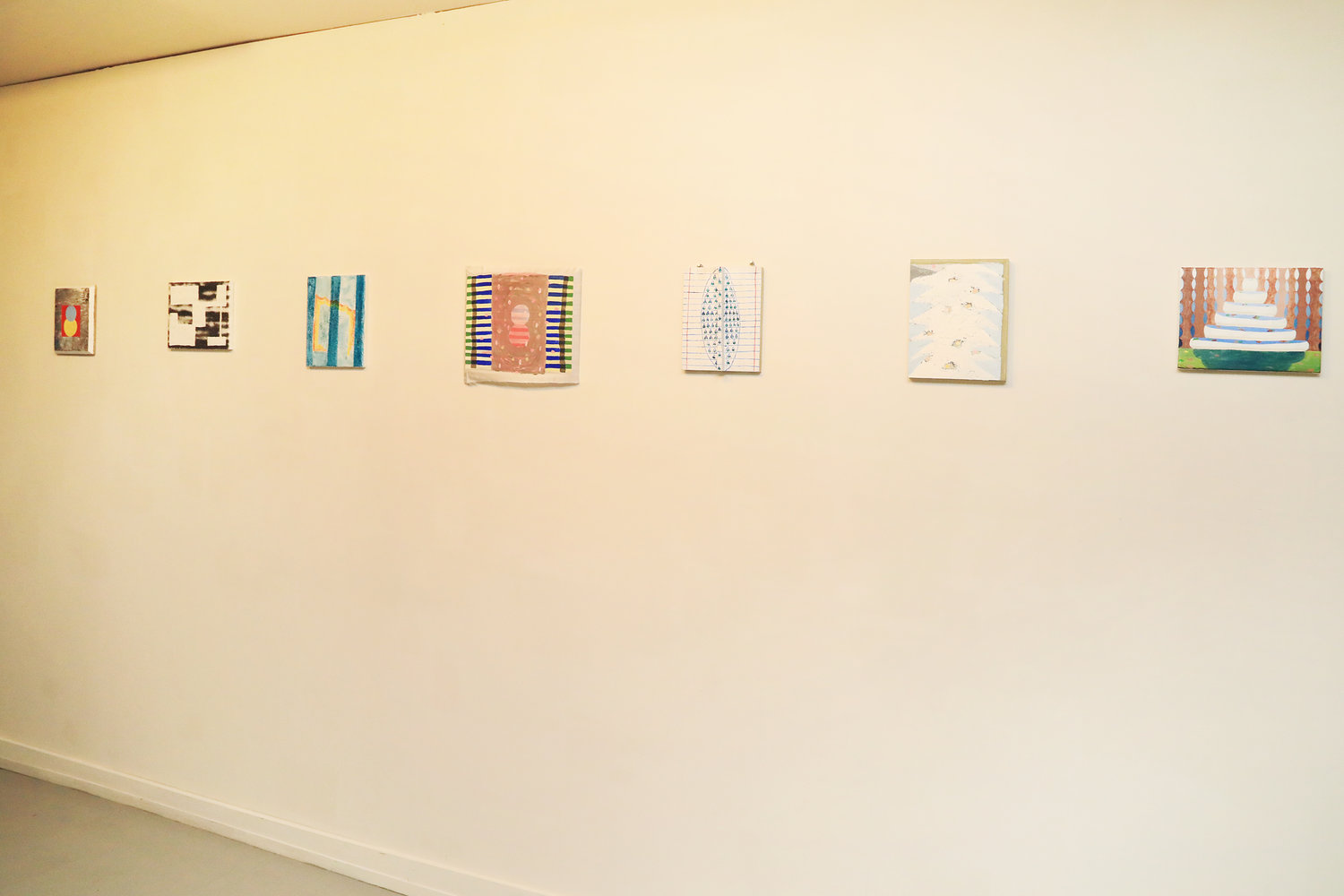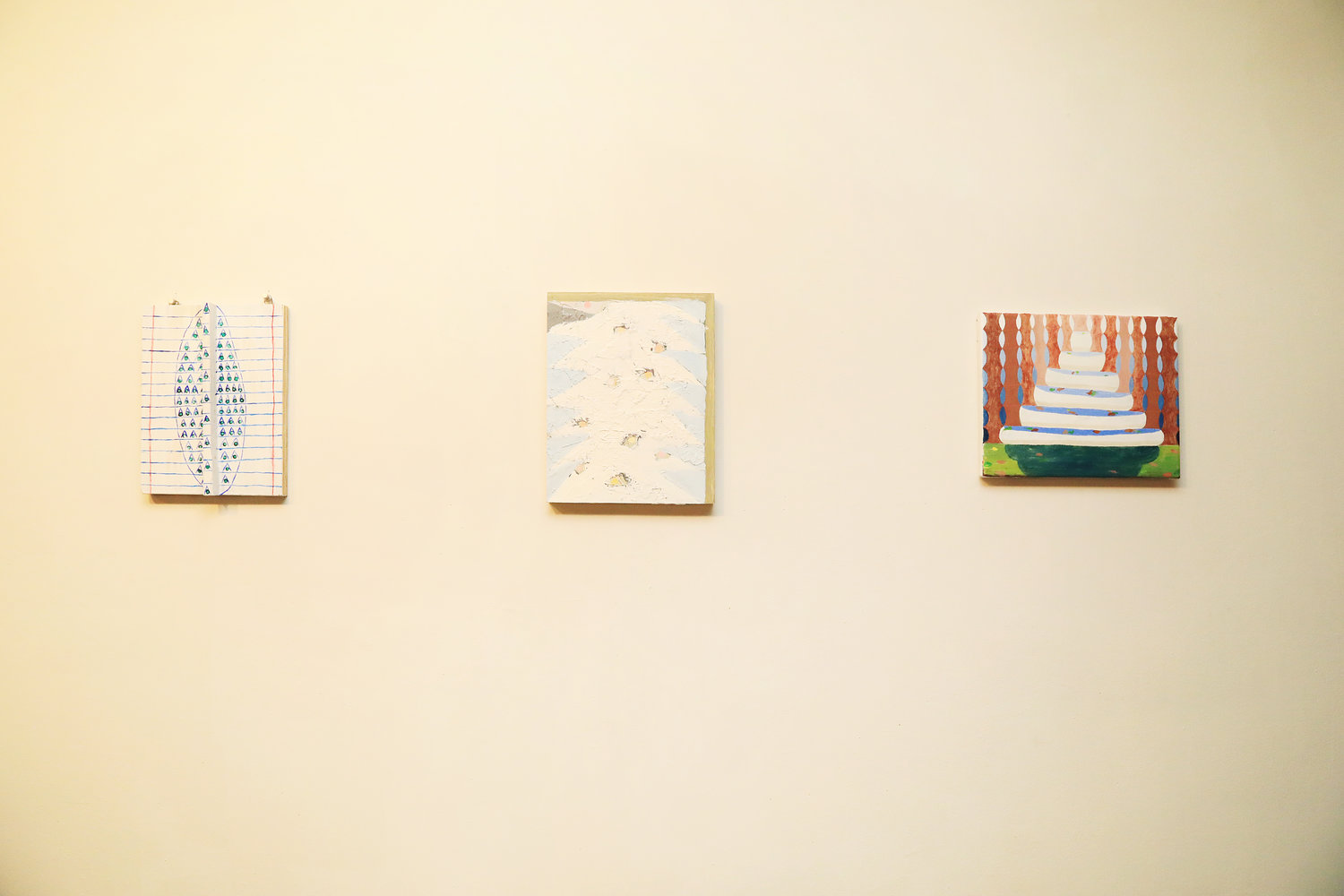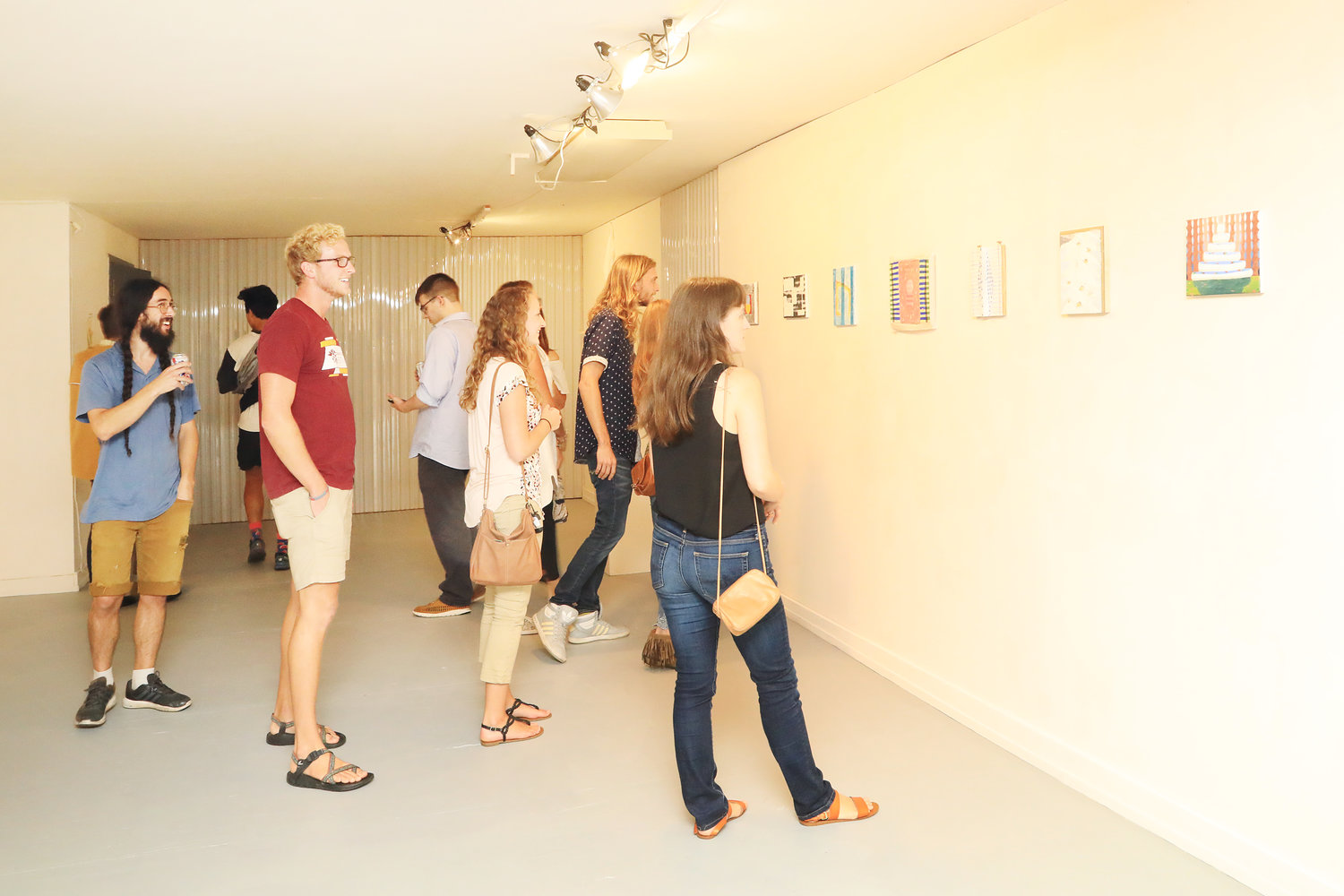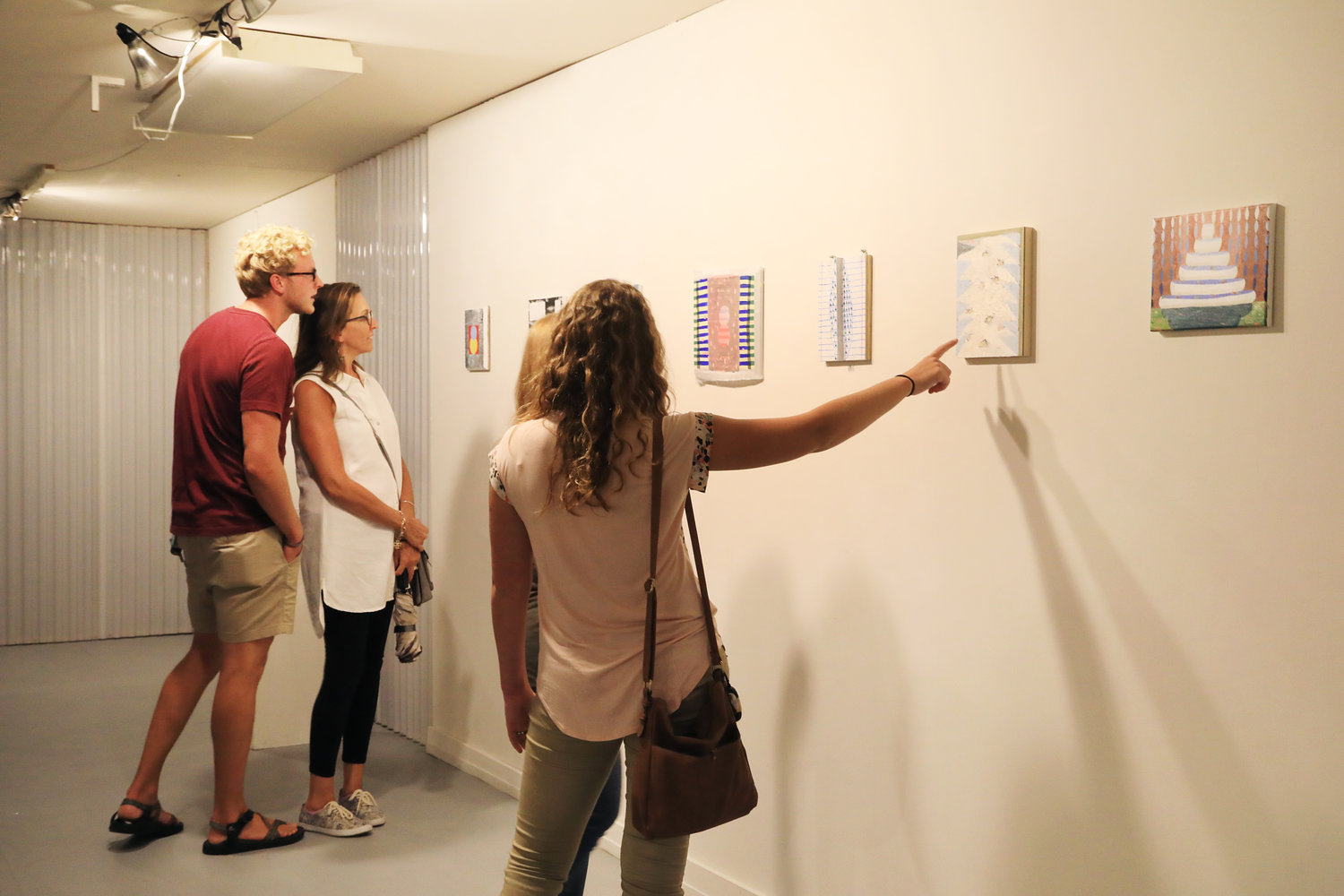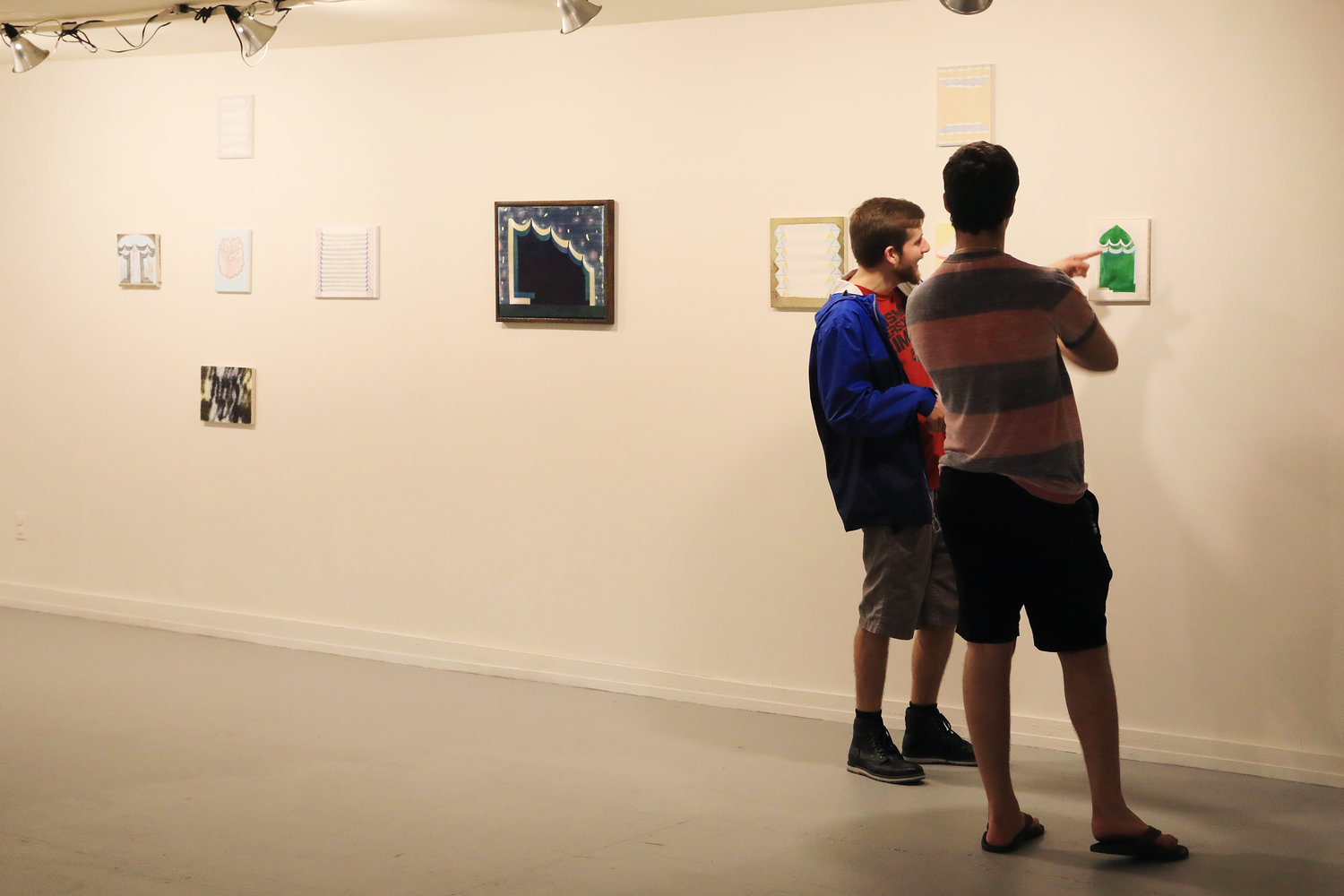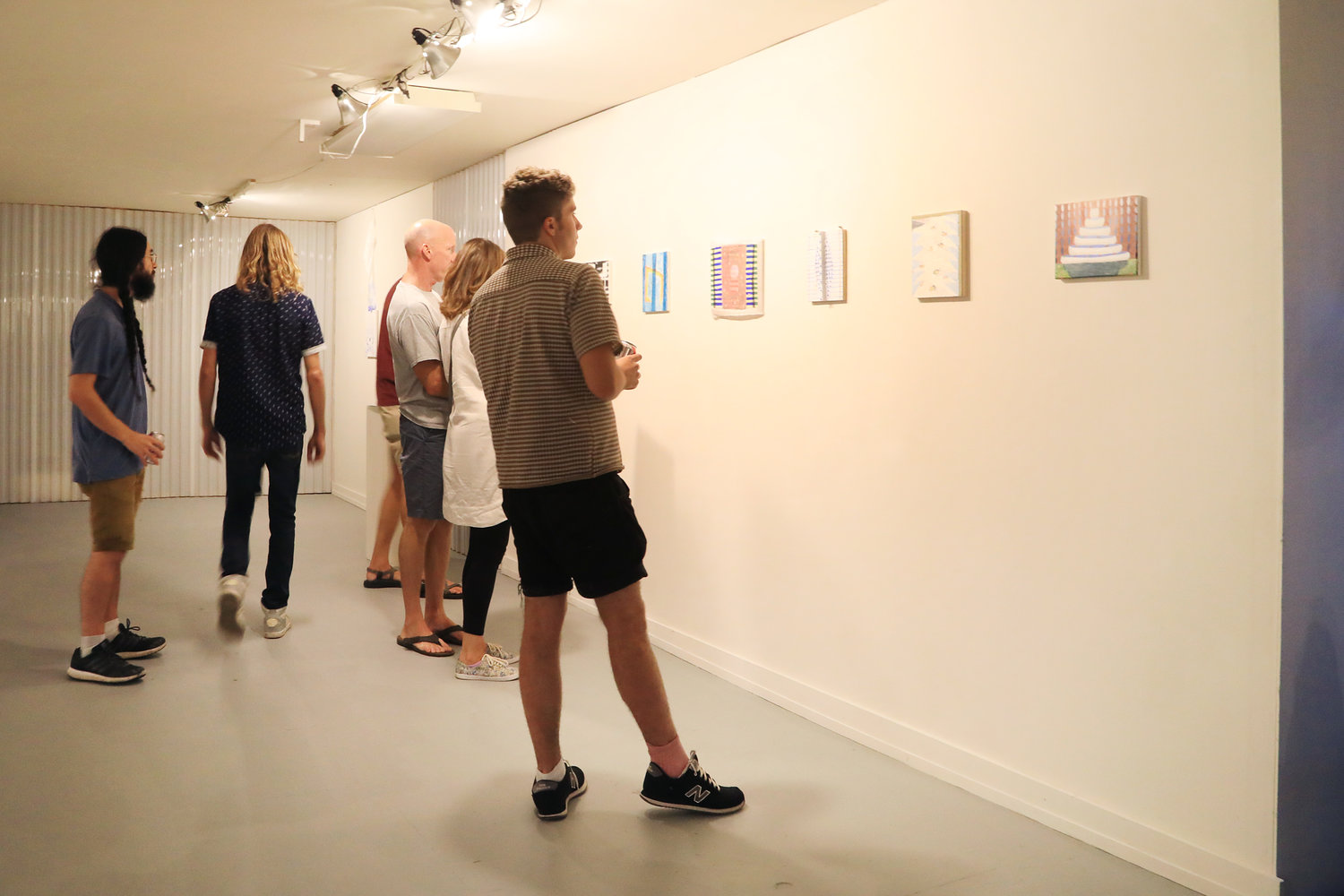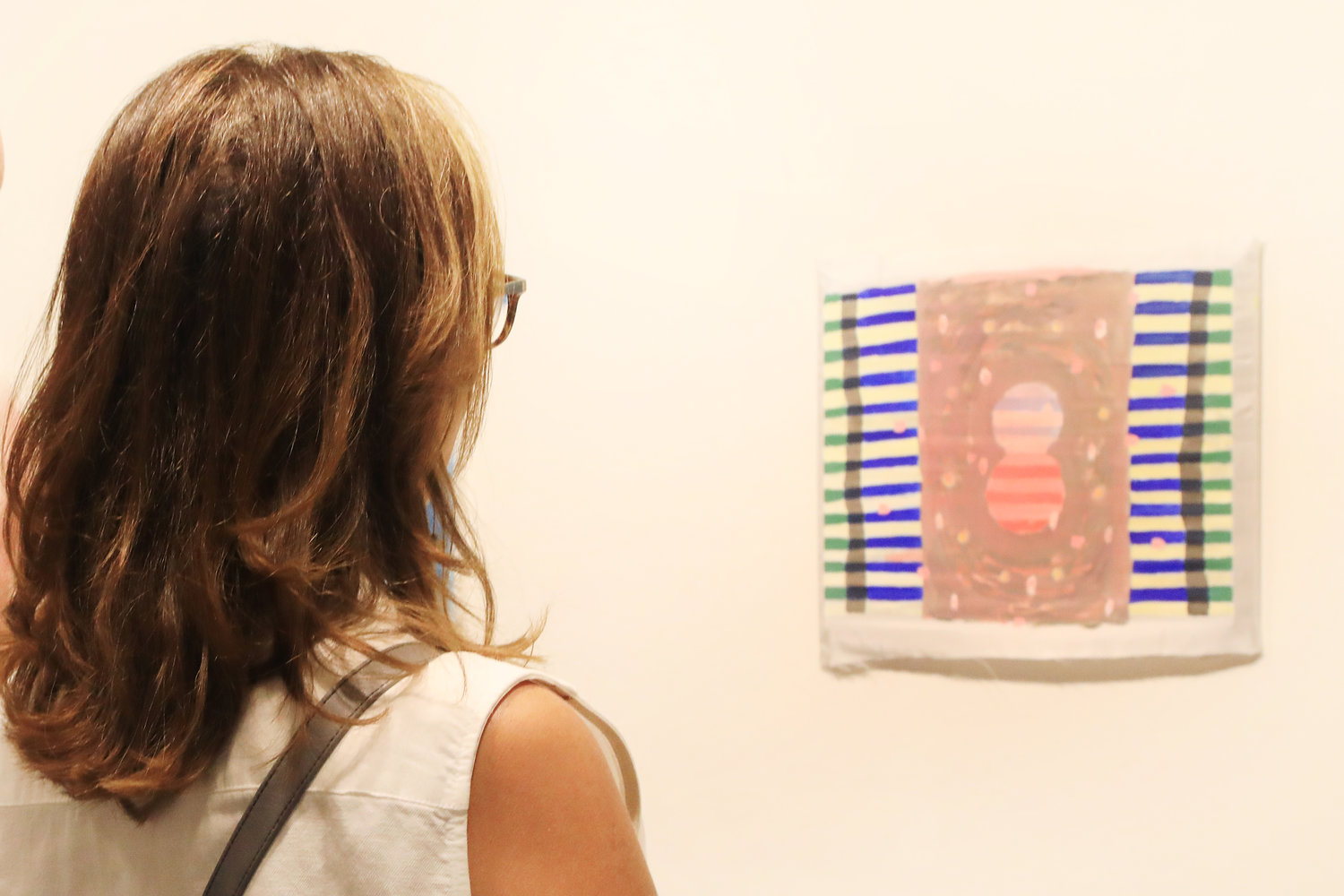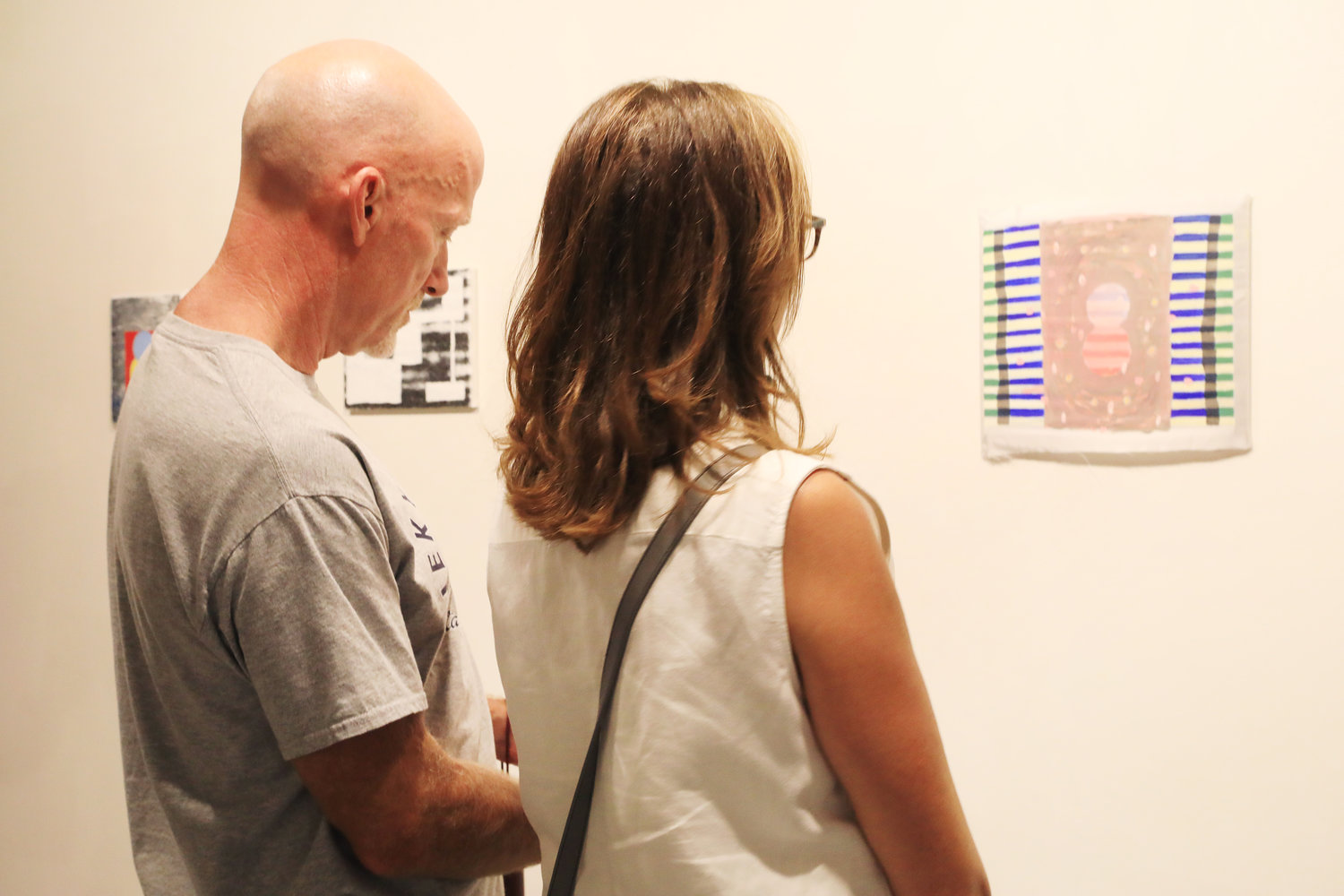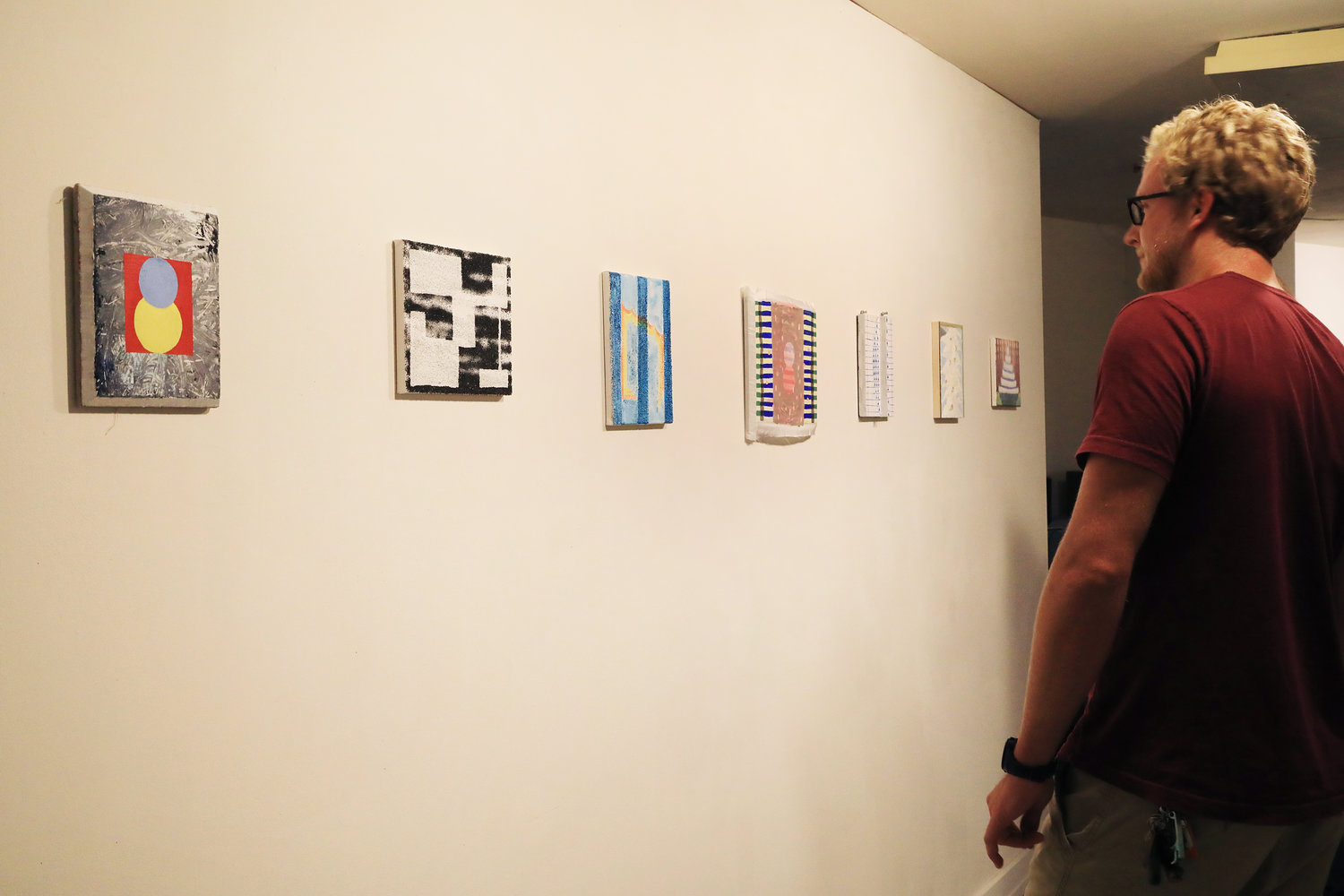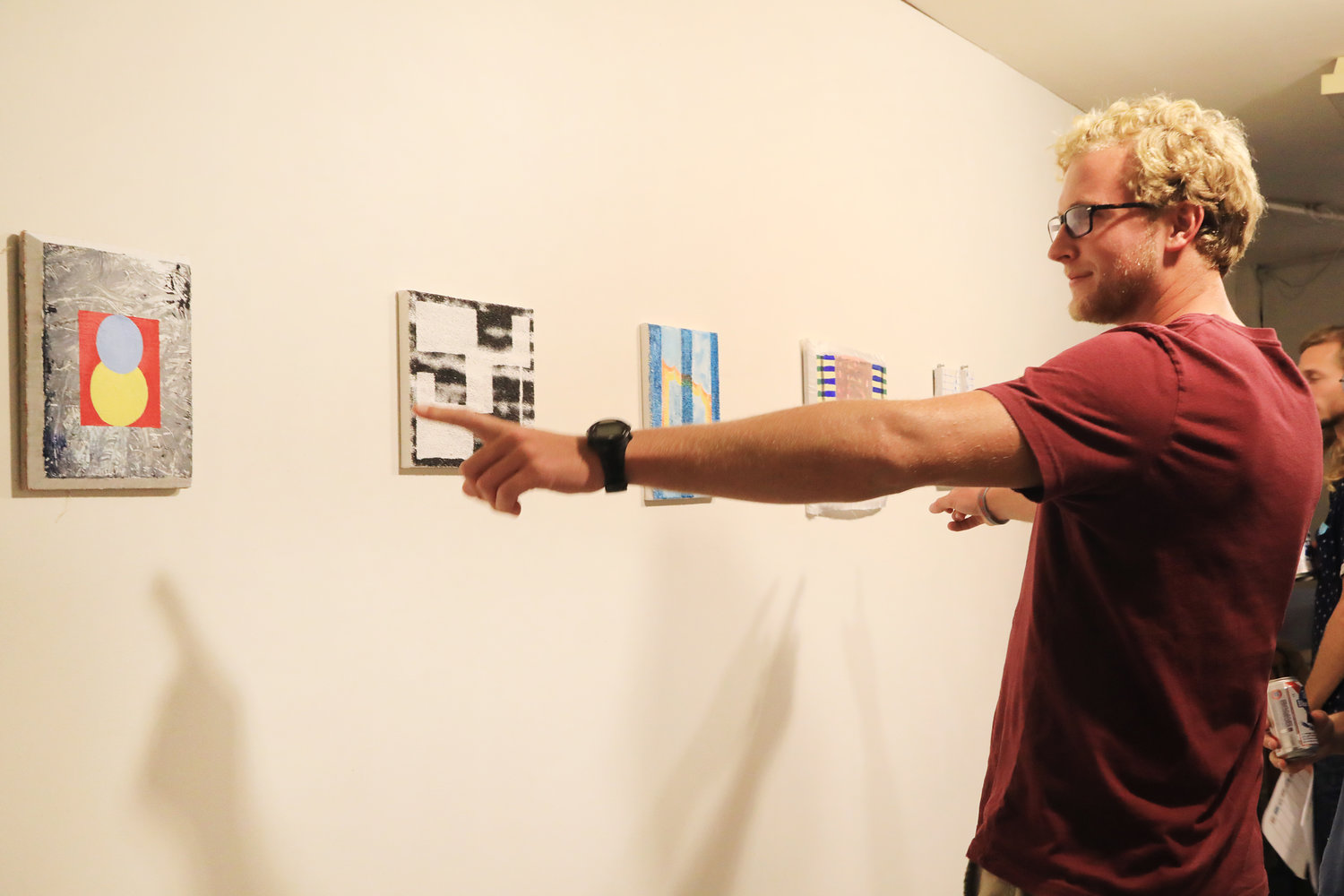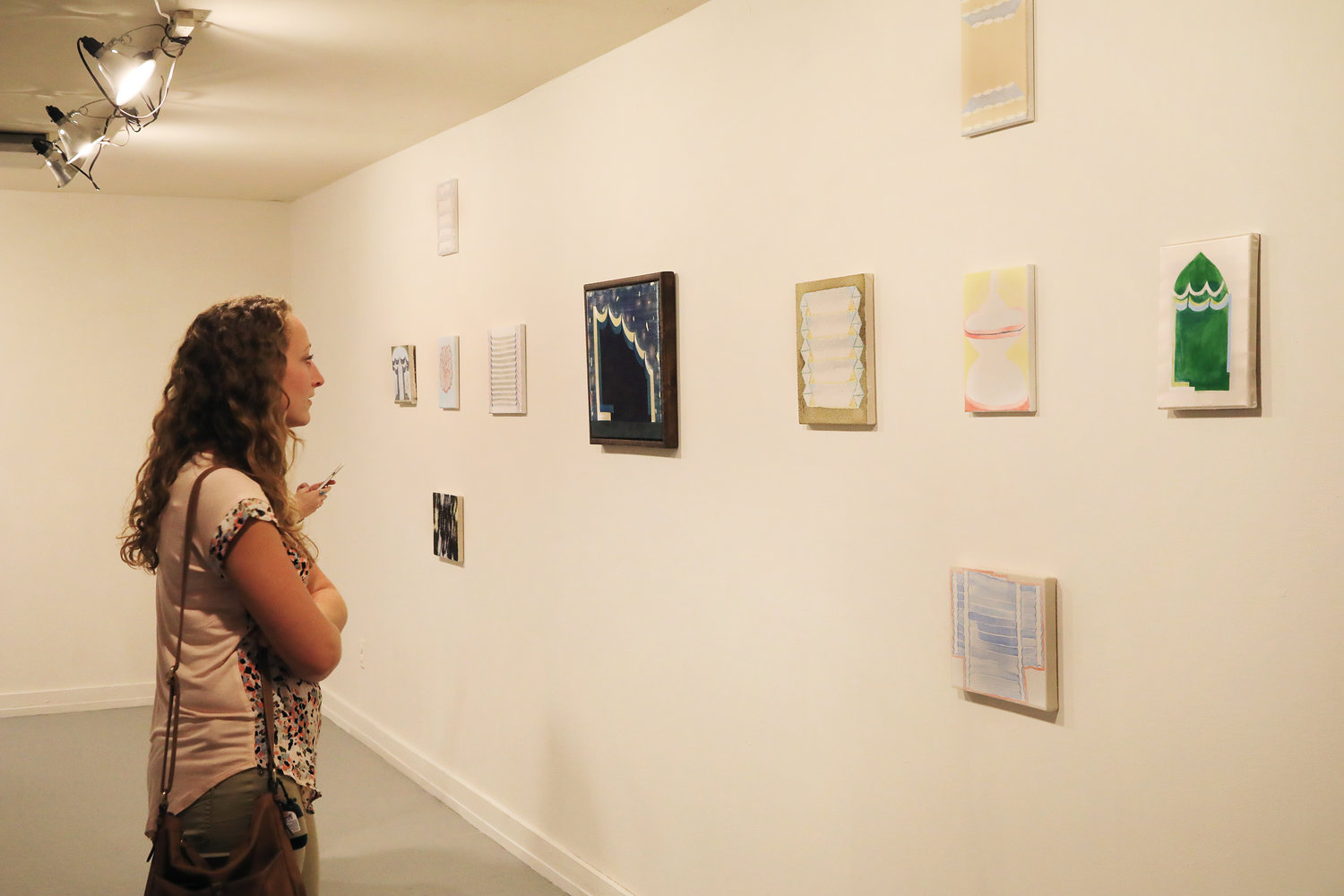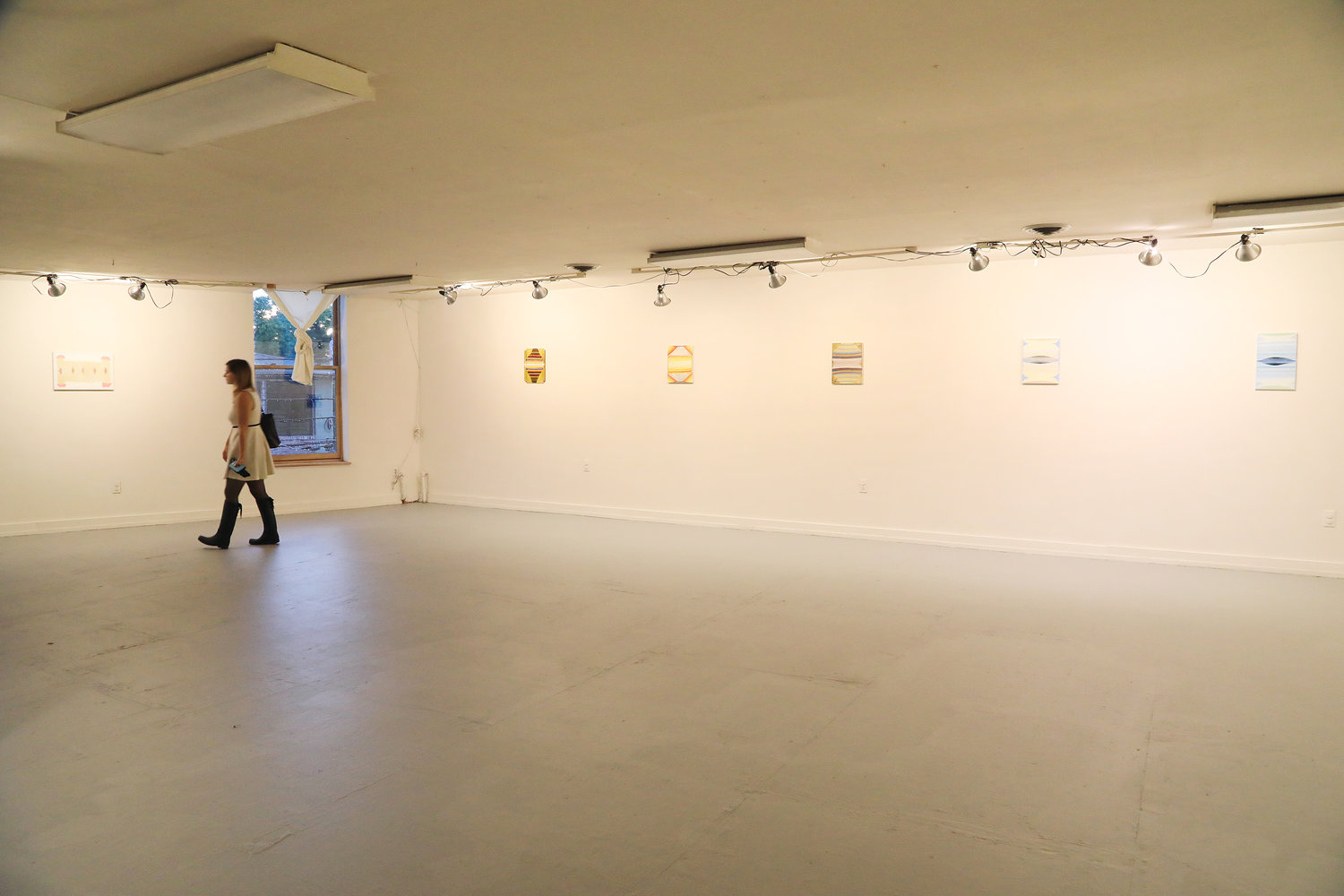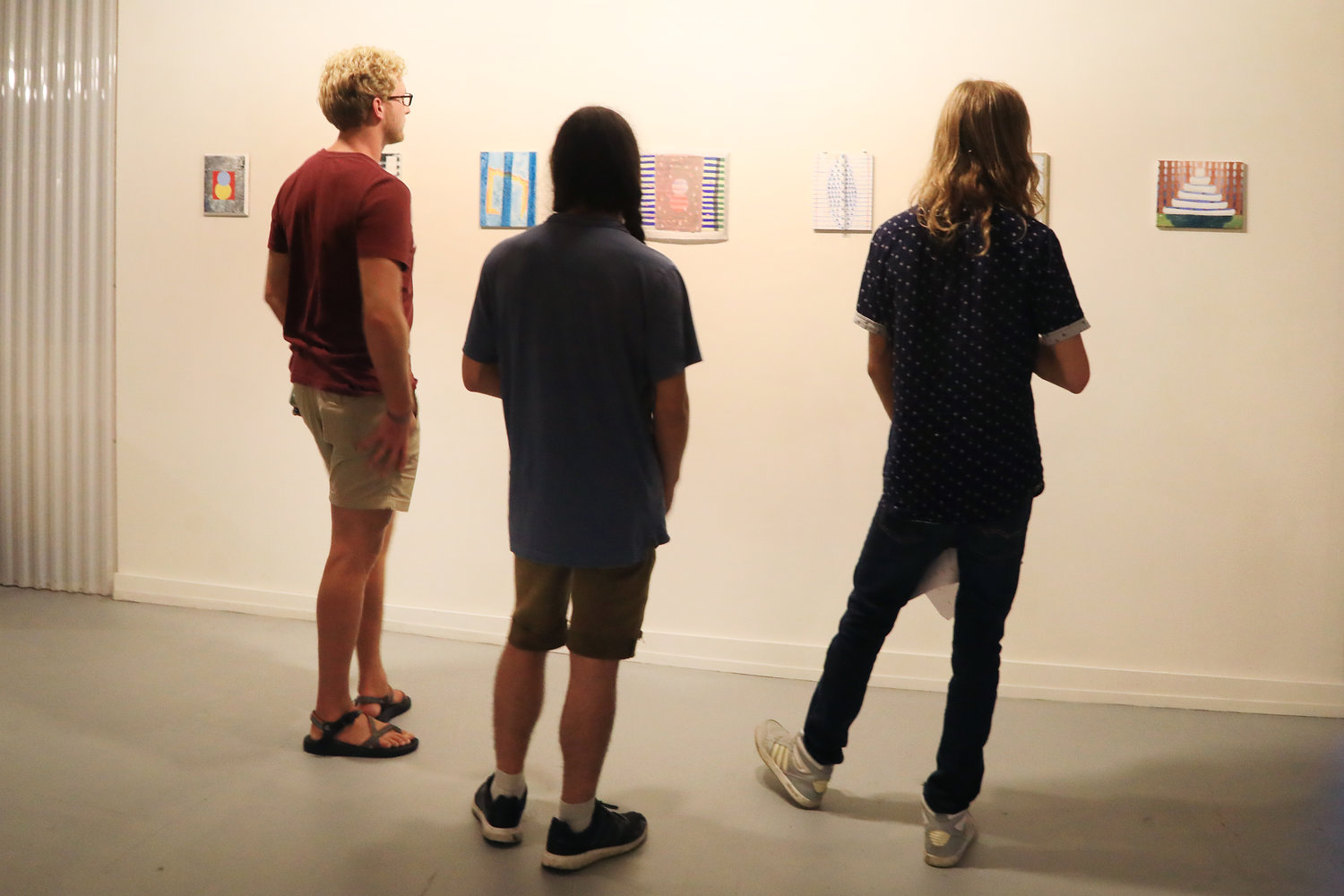David Onri Anderson: I'm So Glad I Got My Own (Natural High) [Analysis]
Knoxville, TN
DAVID ONRI ANDERSON: I'M SO GLAD I GOT MY OWN (NATURAL HIGH) AT FLUORESCENT GALLERY
Seeing David Onri Anderson’s show, I’m So Glad I Got My Own (Natural High) again, during Fluorescent Gallery’s closing reception, was like reading a book for a second time. After processing the initial impact of Anderson's reverent and playful works, a second observation brought new realizations of detail and overall form. Through his small paintings, Anderson has developed a complex and unique visual language through which which he suspends homages to color, representations of dream images, and an intense relationship with materials.
David Onri Anderson's system of visual and stylistic tendencies functions like a linguistic framework, a physical filter through which he channels abstract ideas. Scallops and zigzags, stages and ladders act like a grid upon which to hang color relationships, material explorations, and inner/universal visions. It was unsurprising to learn of Anderson’s deep admiration of the works of Agnes Martin. He has spent many hours studying and copying Martin’s work, likening it to a passionate affair. Though he sees himself now moving in a new direction, the gridded framework within which Martin meditated, from which she deviated, can be seen throughout Anderson's work, as well as in his choices of color. Martin taught him how muted he could be. Anderson says that a teacher once told him that when you copy a work, whatever is different, that’s you.
Apple Core Unscrolled, 2017, Acrylic and Graphite on Canvas
Anderson's intimate reverence for color relationships crystallizes in the mind of the viewer upon extended observation. His respect for the primary triad became more clear. Little homages are laid into the work throughout the show, while he also maintains a thorough intimacy with subtle, elusive hues. An example of this is Apple Core Unscrolled. The imagery for this painting floated in his head for a while before it was finally carried out. It may not be obvious at first glance that the cores have a playful progression into the primary triad, which corresponds to the number of seeds. Anderson says that the whole painting exists for those cores, for that homage to primary colors. He mixes all colors from primary paints, and therefore sees the primaries as seeds from which all other colors spring. Anderson strategically placed primary “portals” throughout the installation to serve as a visual respite, a balance for the brain to find. Once primary color relations click, they are hard to ignore, so he does make efforts to obscure them.
Installation View of "Blue Entrance" "Yellow Entrance" and "Red Entrance"
Anderson says that he processes the world in terms of color, interpreting experiences almost synaesthetically. His color choices also reflect a reverence and passion for nature. You can see the hues and space of the desert, which carry through from time spent in the arid West. He says that he makes efforts to incorporate these hues with the colors found in Tennessee's natural places. A relationship with the natural world is critical for Anderson, providing him with clarity and direction, and refreshing his visual vocabulary.
Anderson’s playful calligraphic lines and common structural frameworks enable him to realize dreamlike images that otherwise might interrupt a body of work as anomalies. These images come to mind for Anderson like a dream - they stay highlighted in his visual to-do list until he paints them. Apple Core Unscrolled is one of these, as well as Fountain of Youth with Leaves In It, FaceHole Tiger, and Dream Painting of Drawing on Paper. Though the images seem distinctly contrary to the surrounding non-objective works, their stylistic tropes (scallops, curves, gradients) tie them in with the rest of the work. Another image that hung in Anderson’s mind is the source of his paper lantern series. He says that he saw the image in a friend’s book, and searched for it afterward in other places with no success. He decided to recreate the image from memory, and it now has dozens of iterations.
David Anderson tries his best to commit to openness in art, rather than relying on habits or self-imposed restrictions. The one thing he expressed with certainty was his investment in making small paintings. With a small work, he can complete an entire idea without struggling against the material or losing the momentum of an idea. He feels that when a painting is all it needs to be within a small frame, that’s a triumph for small painting. The small paintings also allow for a multitude of expressions to inhabit the same space, and invite the viewer to lean in, to investigate. The observer or curator can wrap up the pieces into a system of symbols like an ecosystem. Anderson says that seeing them all displayed as one unit reminds him of speciation, as if they are a collection of various mushrooms or moths.
If the structural repetitions in Anderson’s work are a skeleton and the color juxtapositions a body, then materiality would certainly be the work’s soul. The complexity in visual breadth is compounded by an immense vocabulary of materials, which are employed with reverence and intention. He paints on anything, from classic raw canvas to desert sediment, kitchen wares, and silk. The material takes on the ideology of life and painting. Anderson says that openness to materiality is crucial - for example, he knew that he wanted to work with sand after experiencing a Buddhist sand painting at the Frist Center for the Visual Arts in Nashville. The perfect opportunity arose when a fellow artist had an abundance sparkling black volcanic sand left over from her own installation, which Anderson promptly reclaimed. Openness to materiality, and a little patience, allows magic to happen. In his volcanic sand paintings, the material directs the artist, who sends watered-down paint cascading into tiny whitewashed grains. Anderson's experience with materials like this reflect his transformation as an artist, learning not to cram marks into a chaotic composition, or shove paint into a textured surface haphazardly.
"Our Blue Crystal Fire" 2017
Lightheartedness gives oxygen to David Onri Anderson’s exhibition I’m So Glad I Got My Own (Natural High). The artist was deliberate in establishing a sense of playfulness by installing one of his most whimsical pieces ("Our Blue Crystal Fire") at the entrance, to set the atmosphere for the viewer. Playful curls, bumps, zigzags, references to flowers and apples and notebook paper, elevate and suspend Anderson's quiet meditations on spirituality, reverence for materials, and immersion in color. The paintings made on particularly low-brow substrates like Split Dandelion Painting are, in fact, the most fervent declarations on the essence of mark-making. The moment he decided to step into life as a full-time artist, David Anderson grabbed the nearest insignificant piece of trash (a bag of potato chips) and painted on it, reminding himself that painting is, by nature, transformative.
Fluorescent Gallery
Fluorescent Gallery is located in Knoxville, Tennessee.
Follow them on Instagram: @fluorescentgallery
Find them on Facebook
Mild Climate
Mild Climate is located inside the Packing Plant in Nashville, Tennessee.
Follow them on Instagram: @mild_climate
Mild Climate (Website)
David Onri Anderson
David Onri Anderson currently resides in Nashville, Tennessee.
Follow him on Instagram: @DavidOnri
David Onri Anderson (Website)



